#darwin to kakadu day trip
Explore tagged Tumblr posts
Text
Darwin to Kakadu Day Trip vs. Overnight Tour: Which Suits You Best?
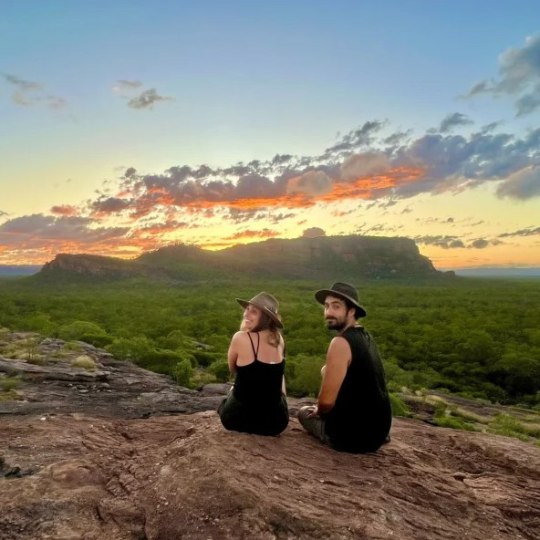
Exploring Kakadu National Park is an unforgettable journey, packed with stunning landscapes, rich Indigenous history, and a diversity of wildlife that’s hard to find anywhere else. But when planning a visit from Darwin, a question arises: should you opt for a quick Darwin to Kakadu day trip or dive deeper with an overnight tour? Here’s a breakdown of both options to help you decide which is the best fit for your adventure style.
The Darwin to Kakadu Day Trip: Quick and Efficient
If you’re short on time or looking for a glimpse of Kakadu’s highlights, a Kakadu Day Tour from Darwin is a fantastic choice. Starting early, you’ll journey from Darwin to Kakadu and enjoy a full day exploring the park’s most popular sites. Key stops usually include Ubirr Rock for ancient Aboriginal rock art, the tranquil Yellow Water Billabong, and scenic lookouts over lush wetlands.
A day trip is action-packed and efficient, giving you a taste of Kakadu’s beauty in just a few hours. However, with the limited time, there’s only so much ground you can cover. For travelers wanting a quick but rich experience, this option ticks all the boxes.
Pros of a Kakadu Day Trip:
Perfect for tight schedules or day-trippers.
Covers major sites and provides a snapshot of the park.
Guided tours offer plenty of information in a short time.
Cons of a Kakadu Day Trip:
Limited time at each location.
Early start and late return, making it a long day.
The Overnight Kakadu Tour: Dive Deeper
If you have more time, consider an overnight Kakadu National Park tour to immerse yourself in the landscape. An extended stay allows for a slower pace, with more time to explore hidden spots and experience a quieter side of the park after the day-trippers leave. In addition to the day-trip stops, you may visit Jim Jim Falls, Kakadu’s tallest waterfall, or take a night tour to witness the area’s unique nocturnal wildlife.
Overnight tours often include the chance to sleep under the stars or stay at a comfortable lodge, giving you the full Kakadu experience. With the luxury of time, you’ll be able to connect more deeply with Kakadu’s natural and cultural wonders.
Pros of an Overnight Tour:
More comprehensive coverage of the park’s attractions.
Flexible schedule allows for leisurely exploration.
Includes unique experiences like sunset views and evening activities.
Cons of an Overnight Tour:
Higher cost due to accommodations and extended services.
Requires more time, which may not fit everyone’s itinerary.
Which One Is Right for You?
If you’re a day-tripper or have limited time, the Darwin to Kakadu day trip is ideal. It’s efficient, hits the highlights, and gives you a taste of Kakadu’s beauty without committing multiple days. However, if you crave a deeper connection with the landscape, enjoy camping or staying in lodges, and want to see more than the highlights, an overnight Kakadu National Park tour is well worth the extra time.
Whether you choose a quick day tour or an immersive overnight stay, Kakadu offers an unforgettable escape into Australia’s wild beauty.
0 notes
Text
A Nature Lover's Guide to Litchfield National Park
Nestled in the heart of the Northern Territory, Litchfield National Park is a haven for nature lovers, offering a stunning array of landscapes, diverse wildlife, and some of the most breathtaking natural wonders in Australia. From its towering waterfalls and crystal-clear rock pools to its lush rainforests and vast savannah woodlands, this park is a true gem for those seeking adventure and tranquility in equal measure. Whether you're a keen hiker, wildlife enthusiast, or simply someone who loves to immerse themselves in the beauty of the outdoors, Litchfield provides the perfect setting to reconnect with nature.
In this guide, we'll take you on a journey through Litchfield's must-see highlights, provide essential tips for exploring its pristine landscapes, and help you make the most of your visit to one of Australia’s most captivating national parks. Get ready to discover the magic of Litchfield—where waterfalls roar, wildlife thrives, and the natural beauty is simply awe-inspiring.
Introduction: Why Litchfield National Park is a Must-Visit Destination
Litchfield National Park, located just a short drive from Darwin in the Northern Territory, is a paradise for nature lovers seeking to immerse themselves in Australia’s wild beauty. With its diverse ecosystems, stunning waterfalls, crystal-clear swimming holes, and rich wildlife, the park offers an unforgettable outdoor experience. Unlike the more well-known Kakadu National Park, Litchfield’s relatively compact size and accessibility make it the perfect destination for day trips or weekend getaways.
The park’s natural wonders are a testament to the power and beauty of the Top End’s tropical landscape. Lush monsoon forests, ancient sandstone escarpments, and an array of spectacular waterfalls—such as Florence Falls, Wangi Falls, and Tolmer Falls—create a picture-perfect backdrop for outdoor enthusiasts. Litchfield also boasts a variety of wildlife, including colorful birds, elusive reptiles, and unique marsupials, making it an exciting destination for wildlife watchers and photographers.
What sets Litchfield apart is the sense of tranquility and closeness to nature it offers. Whether you’re hiking along scenic trails, taking a refreshing dip in one of the park’s many rockholes, or simply soaking in the serenity of the surroundings, Litchfield provides the ultimate escape from the bustle of city life. With its combination of stunning landscapes, diverse wildlife, and accessible adventure opportunities, Litchfield National Park is truly a must-visit destination for any nature lover.
Exploring Litchfield's Iconic Waterfalls
Litchfield National Park is renowned for its spectacular waterfalls, each offering a unique experience for nature lovers. From the thunderous roar of Florence Falls to the tranquil beauty of Wangi Falls, these waterfalls are some of the most iconic features of the park. Whether you’re hiking through lush rainforests, swimming in crystal-clear pools, or simply admiring the view, Litchfield’s waterfalls are a highlight of any visit.
1. Florence Falls: A Majestic Twin Waterfall Florence Falls is one of the most famous waterfalls in Litchfield, with its twin cascades spilling over a 40-meter-high cliff into a refreshing plunge pool below. Accessible via a scenic 1.6-kilometer loop trail, the hike to Florence Falls takes you through monsoon forest, offering a chance to spot vibrant bird species and the occasional wallaby. At the base of the falls, the crystal-clear waters invite visitors to swim, making it a popular spot to cool off. The surrounding rock formations and lush greenery create a serene setting that’s perfect for relaxing or capturing photos.
2. Wangi Falls: A Popular Swimming Hole Wangi Falls is one of the largest and most accessible waterfalls in the park. The falls cascade down into a large, deep swimming hole, making it a favorite spot for visitors looking to swim and unwind. A short 1.2-kilometer loop trail around the falls offers stunning views and a chance to observe the surrounding rainforest. The area around Wangi Falls is equipped with picnic tables and facilities, making it an ideal spot to enjoy a relaxing day in nature. The falls are particularly impressive during the wet season, when the water flow is at its peak, but the swimming hole is safe and inviting year-round.
3. Tolmer Falls: A Dramatic Drop into a Hidden Gorge For a more rugged and dramatic waterfall experience, Tolmer Falls offers a breathtaking view from its lookout. The falls drop over 50 meters into a deep gorge below, creating a striking sight as water plunges over the jagged cliffs. While swimming is not allowed here due to the protected species of bats that roost in the area, the Tolmer Falls Lookout offers some of the most spectacular panoramic views in the park. The short, easy walk to the lookout makes it accessible for visitors of all ages and abilities, and the viewpoint is especially mesmerizing during sunrise and sunset when the light enhances the natural beauty of the falls.
4. The Best Time to Visit While Litchfield’s waterfalls are a beautiful sight year-round, the experience varies depending on the season. The dry season (May to October) offers clear skies, warm temperatures, and perfect conditions for swimming and hiking. During the wet season (November to April), the waterfalls are at their fullest, creating a more dramatic spectacle with heavier water flows. However, it’s important to note that some trails can be slippery or closed due to rainfall, and swimming may not be as safe in the swollen pools. Regardless of when you visit, the waterfalls are sure to leave a lasting impression.
5. Photography Tips The waterfalls of Litchfield are prime spots for photography, with their dramatic falls, lush surroundings, and clear water. For the best shots, consider visiting in the early morning or late afternoon, when the lighting is softer and the crowds are thinner. If you’re photographing Florence Falls or Wangi Falls, try using a slower shutter speed to capture the motion of the water and create a soft, ethereal effect. Be sure to bring a waterproof camera or protective case if you plan to take photos while swimming or getting close to the falls.
Exploring Litchfield's iconic waterfalls is a must for any nature lover visiting the park. Each waterfall offers its own unique charm, whether you're seeking adventure, relaxation, or simply awe-inspiring views. Whether you’re hiking to a hidden viewpoint or cooling off in a rockhole, these waterfalls will leave you with memories of the incredible natural beauty that Litchfield National Park has to offer.
Hiking Trails: Discovering Litchfield's Hidden Gems on Foot
Litchfield National Park offers an array of hiking trails that provide a unique opportunity to explore the park's diverse landscapes, from lush rainforests to rugged escarpments. Whether you're a seasoned hiker or a casual walker, the park has trails that cater to all levels of experience, allowing you to discover its hidden gems at your own pace. Here are some of the best hiking trails that showcase Litchfield’s natural beauty.
1. The Buley Rockhole Loop For those looking for a relatively short and easy hike, the Buley Rockhole Loop is a fantastic option. This 1-kilometer trail meanders through monsoon forest and leads to a series of rockholes that form a natural swimming paradise. The trail is perfect for those who want to combine hiking with the chance to cool off in the crystal-clear waters. The Buley Rockholes themselves are a collection of small pools formed by cascading waterfalls, offering an idyllic setting for a refreshing swim after a short walk.
2. Florence Falls to the Buley Rockhole Trail If you're looking for a slightly longer hike with varied terrain, the Florence Falls to Buley Rockhole Trail offers a 2.5-kilometer loop that takes you through beautiful forest and along the edge of the park’s rugged escarpment. Starting at Florence Falls, the trail follows a series of steps and winding paths that offer breathtaking views over the falls. As you descend, you’ll pass through dense vegetation, before reaching the tranquil Buley Rockhole area, where you can enjoy a well-earned swim. The combination of waterfall views and swimming opportunities makes this trail a highlight of Litchfield.
3. Wangi Falls Loop Trail For a trail that immerses you in the park’s lush rainforest, the Wangi Falls Loop Trail is an excellent choice. This 1.2-kilometer circuit takes you around the base of Wangi Falls, offering stunning views of the falls and the surrounding tropical vegetation. The trail is mostly flat and easy to navigate, making it suitable for families and beginner hikers. As you walk, you’ll encounter an array of flora, including towering palms and lush ferns, and you may even spot some local wildlife, such as wallabies and colorful birds. The highlight of this trail is the opportunity to swim in the large natural pool beneath the falls, where the water is cool and inviting.
4. The Tabletop Track For experienced hikers seeking a more challenging adventure, the Tabletop Track is a must. This 39-kilometer, multi-day hike takes you across the park’s dramatic landscapes, offering expansive views of the surrounding countryside and access to some of Litchfield’s most remote and pristine environments. The track winds its way through open woodlands, wetlands, and escarpments, providing hikers with a deep sense of wilderness. Along the way, you’ll pass by secluded rockholes and hidden waterfalls, as well as gain a unique perspective of the park’s diverse ecosystems. The Tabletop Track is a challenging but rewarding hike for those seeking to experience the full scope of Litchfield’s natural beauty.
5. The Lost City and the Viewpoint Track For something a little different, the Lost City Track is a 4-kilometer trail that leads you to the fascinating "Lost City" rock formations. These sandstone pillars, shaped by millions of years of erosion, resemble a ruined city—hence the name. The trail is moderately challenging, with some steep sections and rocky terrain, but it offers incredible views of the surrounding area and the chance to explore a unique geological feature. The viewpoint at the top of the trail provides panoramic views of the park’s landscape, making it a perfect spot for a photograph.
6. Tips for Hiking in Litchfield While most of Litchfield’s trails are well-maintained and clearly marked, it's important to be prepared before embarking on any hike. Here are a few essential tips:
Wear appropriate footwear: Many of the trails are rocky and uneven, so sturdy hiking boots with good grip are recommended.
Bring plenty of water: The Top End's tropical climate can be hot and humid, especially during the dry season, so make sure to carry enough water for your hike.
Respect wildlife and flora: Stick to the designated trails and avoid disturbing wildlife or picking plants. Litchfield is home to delicate ecosystems that need to be preserved.
Pack sun protection: The sun can be intense, so wear sunscreen, a hat, and sunglasses to protect yourself from sunburn.
7. Best Time to Hike The best time to hike in Litchfield is during the dry season (May to October), when the weather is cooler and more manageable. Trails are generally more accessible, and the waterfalls are flowing at their most impressive. The wet season (November to April) brings heavy rainfall, which can make some trails slippery or impassable, but the waterfalls are often at their fullest and most dramatic.
Hiking in Litchfield National Park offers the chance to discover some of the Northern Territory's most pristine and awe-inspiring landscapes. Whether you’re exploring secluded waterfalls, spotting wildlife, or taking in breathtaking panoramic views, these trails will immerse you in the beauty of this remarkable park. With trails to suit all levels of hikers, there’s no better way to experience the natural wonders of Litchfield on foot.
Wildlife Watching: Encountering Litchfield’s Diverse Flora and Fauna
Litchfield National Park is not only a paradise for waterfall enthusiasts and hikers but also a prime destination for wildlife lovers. The park’s diverse ecosystems, from monsoon forests and woodlands to wetlands and rocky outcrops, are home to a wide variety of flora and fauna. Whether you're an avid birdwatcher, a reptile enthusiast, or simply someone who enjoys observing nature in its purest form, Litchfield offers a wealth of wildlife experiences.
1. Birds of Litchfield: A Birdwatcher's Paradise Litchfield National Park is a haven for birdwatching, with over 200 species of birds recorded in the park. Early mornings or late afternoons provide the best opportunities to spot a variety of avian species as they come out to feed or roost. Among the highlights are the striking red-tailed black cockatoo, often seen flying overhead, and the colorful rainbow bee-eater, which flits around the park’s open woodlands. White-bellied sea eagles are commonly spotted soaring above the park’s wetlands, while woodswallows and finches thrive in the more secluded areas.
For those particularly keen on spotting rare species, the northern rosella and the mangrove kingfisher are unique to the region and can be found in the park’s tropical habitats. The diversity of birdlife in Litchfield makes it a must-visit destination for any birdwatcher.
2. Reptiles and Amphibians: Litchfield’s Scaly Residents Litchfield is home to a wide range of reptiles, from large monitor lizards to the elusive Frill-necked lizard, known for the distinctive frill around its neck that it displays when threatened. The blue-tongue skink, with its signature blue tongue, is another common sight on the park’s trails, often sunning itself on the rocks or basking in the heat. Look carefully along the park’s roads and trails, and you may spot geckos, goannas, and even the occasional sand monitor.
In addition to reptiles, Litchfield is home to a variety of amphibians. The green tree frog is one of the park’s most recognizable amphibians, often found near the park’s waterholes and wetlands. During the wet season, the sound of croaking frogs fills the air, as many species breed in the temporary pools of water created by the rain.
3. Mammals: Rare Encounters with Litchfield’s Residents While Litchfield is better known for its birds and reptiles, it also hosts a surprising number of mammals, some of which are elusive and rarely seen. The park is home to several species of marsupials, including the northern brushtail possum, black-footed rock wallaby, and tree kangaroo. These mammals tend to be nocturnal, so early morning or evening hikes increase your chances of spotting them.
The park is also known for its bats, particularly the orange leaf-nosed bat, which roosts in the crevices of the park’s sandstone cliffs, like those found at Tolmer Falls. While the bats may be hard to spot during the day, their presence can be observed in the caves and rocky outcrops where they hang upside down in large colonies.
4. Insects: Litchfield’s Colorful and Intricate Insects Litchfield’s warmer climate and diverse vegetation make it a great place to observe a wide variety of insects. The park’s tropical ecosystems support a rich array of butterflies, beetles, and dragonflies, with the blue tiger butterfly and citrus swallowtail being common sights. The brightly colored green tree ant is another fascinating insect to watch as it scurries along the trails. In the wetter months, you may also come across swarm ants and other interesting species that thrive in the humidity.
For those interested in observing the relationship between plants and insects, Litchfield’s native flora plays a crucial role in supporting pollinators like bees and butterflies. These insects are not only important for the ecosystem but also provide excellent opportunities for nature photographers to capture their intricate beauty.
5. Best Wildlife Watching Spots For the best wildlife encounters, consider heading to these prime locations within Litchfield:
Buley Rockhole: This serene spot is perfect for birdwatching, with various species of birds frequenting the area. You may also spot reptiles and small mammals while you relax by the water.
Wangi Falls: The surrounding rainforest is home to a wealth of wildlife, including wallabies, frogs, and a variety of birds. The area is particularly lively in the early morning and late afternoon.
Tolmer Falls: While the waterfall is the main attraction, the surrounding rock cliffs and caves are ideal spots to observe bats and other hidden wildlife.
The Lost City: The unique rock formations in this area provide a habitat for lizards and other reptiles, as well as an excellent opportunity for birdwatching.
6. Tips for Wildlife Watching in Litchfield To make the most of your wildlife watching experience in Litchfield, keep these tips in mind:
Stay quiet and patient: Many animals in Litchfield are shy and will flee if they hear sudden movements or loud noises. Move slowly and quietly for the best chances of spotting wildlife.
Bring binoculars and a camera: For birdwatchers, binoculars are essential for getting a closer look at the park’s avian residents. A camera with a zoom lens will also help you capture detailed images of animals from a distance.
Respect wildlife: Always maintain a safe distance from wildlife, particularly reptiles and mammals. Avoid feeding animals or disturbing their natural behaviors.
Wear long sleeves and insect repellent: The park’s tropical climate means insects like mosquitoes and ants are prevalent, so make sure you protect yourself from bites while exploring.
Litchfield National Park is a treasure trove of wildlife, offering nature lovers the chance to encounter a diverse range of animals in their natural habitats. Whether you're spotting birds in the treetops, tracking reptiles along the trails, or observing mammals at dusk, Litchfield promises a rewarding wildlife watching experience that showcases the beauty and richness of Australia’s Top End ecosystems.
Swimming and Relaxation: Cool Off in Litchfield’s Natural Rockholes
Litchfield National Park is not only a haven for wildlife, waterfalls, and hiking but also offers a refreshing retreat with its stunning natural rockholes. These crystal-clear swimming holes, formed by the park’s cascading waterfalls and flowing streams, provide the perfect opportunity to cool off, relax, and immerse yourself in nature. Whether you're seeking a peaceful spot to unwind or an exciting location to swim, Litchfield’s rockholes offer an unforgettable experience for nature lovers and adventure seekers alike.
1. Buley Rockhole: A Serene Oasis One of the most popular and accessible swimming spots in Litchfield, Buley Rockhole is a series of natural plunge pools fed by cascading water. Located near the park’s entrance, it’s an ideal place to relax after a day of hiking or sightseeing. The pools vary in size, allowing swimmers to choose their own level of adventure. Some areas are perfect for lounging, while others feature small waterfalls and gentle currents, making it a fun spot for families and those looking to take a refreshing dip.
The surrounding monsoon forest and lush vegetation create a serene and tranquil atmosphere, perfect for lounging by the water and soaking in the beauty of the natural surroundings. The shallow pools are also great for children, offering a safe and enjoyable spot for younger visitors to enjoy a swim.
2. Wangi Falls: A Large Swimming Hole with a Scenic Backdrop Wangi Falls is one of the most iconic and accessible spots for swimming in Litchfield. The large, deep pool at the base of the falls invites visitors to take a plunge, surrounded by towering rock walls and dense rainforest. The view of the water cascading down the rocks into the pool creates a stunning backdrop for swimmers. This picturesque location is perfect for both relaxation and swimming, making it a favorite for nature lovers.
In addition to its beauty, Wangi Falls offers several amenities, including a picnic area, making it an ideal spot for a day trip. While the water is inviting throughout the year, it is particularly spectacular during the wet season when the falls are at their fullest, offering an even more dramatic experience.
3. Florence Falls: A Scenic Waterfall and Swimming Spot Florence Falls offers another opportunity to swim in Litchfield’s pristine waters. The falls plunge 40 meters into a refreshing pool, creating a stunning and serene location for a swim. The surrounding lush forest and the impressive rock formations make Florence Falls a magical place to relax and enjoy nature. The 1.6-kilometer loop trail to the falls allows visitors to appreciate the natural beauty of the park, and once at the base, the cool waters of the plunge pool provide the perfect way to cool off.
The natural beauty and peaceful setting make Florence Falls a favorite spot for those looking to unwind and reconnect with nature. The area also features a lookout point for those who prefer to stay dry while taking in the view of the falls from above.
4. Tolmer Falls: Spectacular Views, No Swimming While Tolmer Falls is one of Litchfield’s most breathtaking waterfalls, swimming is not permitted here due to the presence of a protected bat colony in the surrounding caves. However, the falls’ dramatic 50-meter drop into a deep gorge offers spectacular views, making it a worthwhile stop for those looking to enjoy the beauty of the park from the lookout.
Though swimming isn’t allowed, Tolmer Falls is still a must-see destination for nature lovers. The lookout provides panoramic views of the surrounding landscape, and visitors can enjoy a peaceful moment taking in the awe-inspiring scenery.
5. Safety and Swimming Tips While swimming in Litchfield’s rockholes is a fantastic way to experience the park, it’s important to keep safety in mind:
Check for current conditions: Always check the safety of swimming holes before entering. Heavy rains or strong currents may affect water conditions.
Avoid jumping or diving: Rocks and shallow areas may be hidden under the water, so it’s important to avoid jumping or diving.
Be aware of wildlife: Although the swimming areas are safe, some creatures such as crocodiles, especially during the wet season, may inhabit nearby waters. Always swim in designated safe areas and follow park guidelines.
Bring essentials: Remember to bring sunscreen, a hat, and water shoes for comfort and protection while swimming or relaxing around the rockholes.
6. The Best Time to Swim The best time to visit Litchfield’s rockholes for swimming is during the dry season, from May to October, when the weather is warm, the waterfalls are flowing, and the conditions are ideal for outdoor activities. The wet season (November to April) can bring stronger currents, more mosquitoes, and some trail closures, making it less ideal for certain activities, though the waterfalls are at their most spectacular during this time.
Swimming in Litchfield’s natural rockholes offers the perfect combination of adventure, relaxation, and connection with nature. Whether you're cooling off after a hike or simply soaking in the beauty of your surroundings, these tranquil waters provide an experience that is quintessentially Litchfield—a perfect way to enjoy the stunning landscapes and serenity of the Northern Territory.
Essential Tips for Your Visit to Litchfield National Park
Litchfield National Park is a stunning destination for nature lovers, offering a mix of breathtaking waterfalls, diverse wildlife, and scenic hiking trails. To ensure you have the best possible experience while exploring the park, here are some essential tips to help you plan your visit and make the most of your time in this natural wonderland.
1. Plan for the Best Time to Visit The ideal time to visit Litchfield National Park is during the dry season, which typically runs from May to October. During this time, the weather is cooler and more comfortable for outdoor activities, and the park’s waterfalls are still flowing from the earlier wet season rains. This is also the best time for hiking and wildlife watching. The wet season, from November to April, brings heavy rains that can cause certain trails to be closed or become slippery. However, the wet season can offer dramatic waterfall views as they are at their fullest.
2. Wear Comfortable Clothing and Footwear When visiting Litchfield, it's important to wear lightweight, breathable clothing suitable for tropical conditions. Make sure to bring sturdy, comfortable hiking shoes, as many of the trails are rocky, uneven, and may involve some climbing or descending steps. For water activities, pack a swimsuit and water shoes to protect your feet in rocky pools or waterfalls. A hat, sunglasses, and lightweight long sleeves or pants can help protect you from the sun and insects.
3. Stay Hydrated and Pack Essentials The Top End's tropical climate can be hot and humid, so it’s crucial to stay hydrated while exploring the park. Always carry plenty of water with you, especially if you’re heading out on one of the more remote hiking trails. Along with water, consider bringing some high-energy snacks, sunscreen, insect repellent, and a first aid kit. A camera and binoculars are also recommended for wildlife watching, as Litchfield is home to a variety of unique flora and fauna.
4. Respect the Wildlife and Environment Litchfield National Park is home to a wide array of wildlife, including birds, reptiles, and mammals. While exploring, remember to observe wildlife from a distance without disturbing their natural behavior. Never feed animals, as it can disrupt their diets and lead to dangerous interactions. Stick to designated trails and rockholes to protect the delicate ecosystems, and refrain from picking plants or disturbing natural habitats.
5. Be Mindful of Safety Around Waterfalls Litchfield is famous for its spectacular waterfalls, but it’s important to prioritize safety when swimming in or near the water. Always swim only in designated safe areas, as some spots may be off-limits due to strong currents or crocodile habitats. Be cautious near cliff edges or slippery rocks, and avoid jumping or diving into the water. It’s also wise to check for any safety warnings posted by park authorities before entering any waterholes.
6. Prepare for Limited Facilities While Litchfield National Park offers basic facilities like picnic areas, restrooms, and campgrounds, services within the park are limited. Make sure to stock up on essentials like food, water, and fuel before entering the park, as there are few shops or services within the park itself. There are a few campgrounds if you're planning to stay overnight, but it's a good idea to book your campsite in advance, especially during the peak tourist season.
7. Respect the Weather and Plan for Changing Conditions Litchfield's weather can change quickly, especially during the wet season, so be prepared for sudden rain showers and temperature shifts. Always check the weather forecast before heading out, and be flexible with your plans if conditions change. If you're hiking, ensure you have a waterproof jacket or poncho to stay dry, and keep an eye on trail conditions, as some may become slippery during or after rain.
8. Embrace the Park's Eco-Friendly Policies Litchfield National Park is a protected area, and visitors are encouraged to follow the park’s eco-friendly policies. Dispose of all trash responsibly by using the bins provided, and try to leave no trace of your visit. If you're camping, follow the Leave No Trace principles, which include staying on established campsites, using biodegradable soaps, and minimizing your environmental impact.
9. Use the Park’s Facilities for Your Convenience Litchfield offers several facilities that make your visit more comfortable, such as information centers and well-marked walking tracks. Stop by the visitor center upon arrival to pick up maps and get the latest updates on trail conditions, safety alerts, and any closures. Some trails and rockholes can be quite remote, so having a map or GPS device is always a good idea to ensure you stay on track.
10. Consider Guided Tours for a Deeper Experience If you want to gain more insight into the park’s history, ecology, and wildlife, consider joining a guided tour. Local guides are often available for wildlife watching, bushwalking, or photography tours, and they can provide a wealth of knowledge about the park’s unique features. A guided tour can also enhance your experience by taking you to hidden gems and areas that might be hard to find on your own.
By following these tips and preparing adequately for your visit, you’ll be able to enjoy all the natural beauty Litchfield National Park has to offer while ensuring your safety and respecting the environment. Whether you're hiking, swimming, or wildlife watching, Litchfield promises a truly memorable experience for all nature enthusiasts.
Conclusion
Litchfield National Park is a must-visit destination for nature lovers, offering a unique blend of natural beauty, adventure, and tranquility. With its iconic waterfalls, diverse wildlife, scenic hiking trails, and inviting rockholes, the park provides endless opportunities for exploration and relaxation. Whether you’re drawn to the stunning views of Wangi and Florence Falls, the serenity of Buley Rockhole, or the chance to spot unique flora and fauna, Litchfield is a place where nature’s wonders come alive.
By planning ahead, respecting the environment, and immersing yourself in the park’s unspoiled landscapes, you can make the most of your visit to this Northern Territory gem. Whether you're a seasoned adventurer or simply seeking a peaceful retreat in nature, Litchfield National Park offers something for everyone. Pack your gear, leave your worries behind, and let the beauty of Litchfield leave a lasting impression on your soul.
#kakadu tour#kakadu tours from darwin#kakadu national park tours#2 day kakadu tours from darwin#yellow water cruise kakadu#kakadu national park tours from darwin#kakadu trips#yellow river cruise kakadu#kakadu tours and travel#jim jim falls tours kakadu#litchfield np#katherine gorge#eco-friendly tours#aboriginal cultural experiences#indigenous heritage tours#outback adventure safaris#environmental conservation tours
0 notes
Text
Wednesday 23th October 2024
It sometimes takes us by surprise when something small can bring so much pleasure. One such example might be found with the pedestrian crossing set-up here on crossroads; and there are a lot of those due to the grid system. When the little green man light shows, and he is on a four road junction, it is permitted to cross DIAGONALLY! It's great, you can do that all day long I'd you want.
A trip into Coles (round the corner down Peel) this morning, you realise that the Aboriginal population is out in force. They are sensible enough to avoid the midday and afternoon sun.
Today we took a taxi to the airport to collect our rental car that will take us 2500kms across the outback to Townsville. Our first stop is in Kakadu National Park for seven nights, but our accommodation is, well, basically a tent with glass doors, king size bed so not really roughing it, but doesn't have cooking facilities. So we are stocking up with loads of water, wine and anything edible that does not require cooking or chilling. That rules out Tim Tams for obvious reasons in this heat. Thankfully, the next stop has all the kit and caboodle so we will be able to cook again. We booked the car on-line at home through a company called holidaycars.com. Now I know that sounds dodgy but they use Europcar to actually provide said vehicle. In our defence for such a rush of madness was that few rentals would be happy to take their expensive vehicle thousands of kilometres and dump it there far from home. They did, but what surprised me most was when we showed up at the Europcar stand at Darwin airport, they actually gave us a car. I say car but this is an enormous lump of tin. It's a Ford Ranger pickup. Huge it is but still petite compared with some of the 4x4 outback offroaders with cow bars on the front. Transaction complete, the little desk clerk suggested that we might seriously want to carry some weapon with us, you know, he said, just in case. Not necessarily a gun, perhaps a bat or a large spanner? I mean what is out there? Are we talking animal or human here I asked. He pursed his lips.
We shall be sad to leave Darwin. It's a great town. Small town, big community. We watched a man in high vis pressure washing 10 meters of pavement this morning. It took him 1.5 hrs. Pretty good, just a mile and a half left to do. It's almost like they find things for people to do! After sorting this admin, we went for a Guinness in Shenannigans. Irish pubs are all over the world! As the barmaid poured it I enquired if it were genuine Liffy water. A rather blank look came upon her as she said she could find out.
Our first visit here was on the cruise ship in 2016. I remember so well stepping ashore onto Australian soil for the very first time and feeling the thrill of achieving something that I'd wanted for so long. When we were back on board, I clearly remember the band playing by the ship's swimming pool and the lyrics:
I've been to cities that never close down
From New York to Rio and old London town
But no matter how far or how wide I roam
I still call Australia home.
Australians are so much more patriotic and home loving than any other nation on earth. This song was sung at the closing ceremony of the 1994 Sydney Olympics I believe. Right up there with Waltzing Matilda.
ps. I wanted to secure a Tee shirt with The Top End emblazoned across it. So I popped into an establishment in The Mall, and when asked if they had such a garment she kind of looked down her nose and said no, try the tourist shop across the road. Clearly I'm not in the snappy dresser category.
pps There is a sogn in tue kitchen that says 'When cooking always operate the extractor fan since there's a $1400 charge on calling the fire brigade out'! Wow, does it extract flames?
ppps Tomorrow we set off deeper into the Northern Territories to Kakadu National Park and the Ourback where Crocodile Dundee was filmed. We are not entirely sure what the WiFi or mobile reception will be, so further posts could be affected.
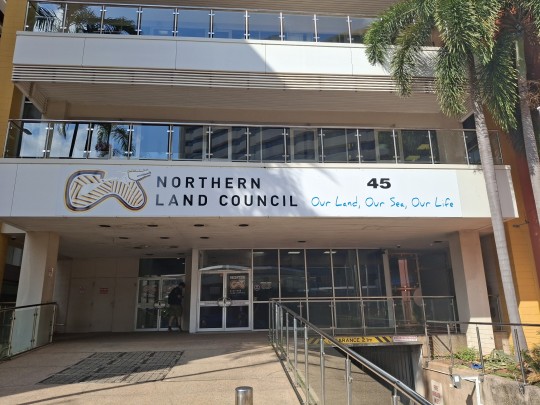



2 notes
·
View notes
Text
Best Escorted Tours of Australia: Explore the Land Down Under with Expert Guidance
Australia is a land of extraordinary landscapes, vibrant cities, unique wildlife, and rich cultural heritage. But with so much to see and do, planning the perfect itinerary can be overwhelming. That’s where escorted tours of Australia shine. These guided journeys take the stress out of travel, offering expertly curated experiences, knowledgeable tour leaders, and all the logistics handled for you. Whether you’re a first-time visitor or a seasoned adventurer, escorted tours provide an effortless way to uncover the best of Australia.
In this article, we’ll explore the best escorted tours of Australia that showcase the country's most iconic destinations and hidden gems.
Why Choose an Escorted Tour of Australia?
Before diving into specific tours, here’s why escorted tours are a smart choice:
Expert Guides: Learn from local experts who offer rich insights into history, nature, and culture.
Stress-Free Planning: No need to worry about accommodation, transport, or tickets.
Social Experience: Travel with like-minded people from around the world.
Access to Hidden Gems: Visit places that independent travelers often miss.
Safety and Comfort: Travel with confidence, especially in remote areas.
Top Destinations Covered in the Best Escorted Tours of Australia
Escorted tours in Australia cover a wide variety of landscapes, from the outback to the reef. Here are some must-visit locations often included:
1. Sydney
Most tours start or end in Sydney, Australia’s largest city. Iconic landmarks like the Sydney Opera House, Harbour Bridge, and Bondi Beach offer a stunning urban introduction.
2. The Great Barrier Reef
Explore one of the Seven Natural Wonders of the World with reef cruises, snorkeling adventures, and marine wildlife encounters.
3. Uluru (Ayers Rock)
Located in the heart of the Northern Territory, Uluru is a sacred Aboriginal site and a breathtaking natural wonder often featured in outback tours.
4. The Great Ocean Road
Victoria’s famous coastal route offers jaw-dropping ocean views, the Twelve Apostles, and charming seaside towns.
5. Tasmania
This island state boasts untouched wilderness, national parks, and heritage towns. Many escorted tours offer special Tasmania circuits.
6. Kakadu National Park
A UNESCO World Heritage Site, Kakadu offers ancient rock art, wetlands, crocodiles, and Aboriginal cultural experiences.
7. Melbourne
A cultural hotspot known for its coffee culture, laneways, and arts scene, Melbourne adds a cosmopolitan flair to many escorted tours.
The Best Escorted Tours of Australia (Top Picks)
Here are some of the best escorted tours of Australia offered by reputable travel companies:
1. Trafalgar – Australia and New Zealand Panorama
This 15-day tour combines highlights of both Australia and New Zealand. It includes guided visits to Sydney, Cairns (Great Barrier Reef), Rotorua, and Queenstown. Ideal for those wanting a broader Australasian experience.
2. AAT Kings – Outback Adventure
This 15-day escorted journey focuses on the Red Centre and Northern Territory. From Uluru and Kings Canyon to Alice Springs and Darwin, you’ll experience the true spirit of the outback.
3. Intrepid Travel – East Coast Explorer
Targeting adventure seekers, this 13-day small group tour runs from Sydney to Cairns. Snorkeling in the reef, rainforests of Daintree, and beach time in Byron Bay are highlights.
4. Insight Vacations – Country Roads of Australia
A luxurious option with fewer crowds, this tour explores off-the-beaten-path areas such as the Hunter Valley wine region, Kangaroo Island, and the Flinders Ranges.
5. APT Touring – Kimberley Complete
Specializing in Western Australia, this 15-day trip explores the wild and remote Kimberley region with scenic flights, cruises, and Aboriginal rock art viewing.
Types of Escorted Tours in Australia
Escorted tours come in various styles depending on your travel preferences:
1. Luxury Escorted Tours
Perfect for travelers seeking high-end accommodations, gourmet meals, and exclusive experiences.
2. Budget-Friendly Tours
Affordable group tours offering value-for-money itineraries, usually focusing on the main tourist circuits.
3. Small Group Tours
Limited to 12–20 people, these tours offer a more personalized and flexible travel experience.
4. Adventure Tours
For active travelers, these include hiking, kayaking, 4WD expeditions, and eco-lodges.
5. Special Interest Tours
Includes wildlife tours, Aboriginal culture-focused tours, food and wine experiences, and photography safaris.
Things to Consider When Choosing an Escorted Tour
Tour Length: Tours range from 5-day city breaks to 25-day continent-spanning adventures.
Group Size: Smaller groups allow for deeper engagement and flexibility.
Inclusions: Review what’s covered—meals, park entry fees, transport, and optional activities.
Fitness Level: Some tours require moderate physical activity—check before booking.
Seasonality: Consider the best time to visit each region (e.g., avoid the Top End during the wet season).
Best Time to Take an Escorted Tour in Australia
Australia’s vast geography means the best time to visit varies by region:
September to November (Spring): Ideal for most regions, especially coastal areas.
March to May (Autumn): Great for touring cities and the outback with pleasant weather.
June to August (Winter): Good for visiting the Top End (e.g., Darwin, Kakadu) due to dry and cooler conditions.
December to February (Summer): Best for southern cities like Melbourne and Tasmania, but avoid the outback and far north due to heat.
Final Thoughts
If you want a seamless and enriching way to explore Australia, choosing from the best escorted tours of Australia is the way to go. Whether you dream of snorkeling in the Great Barrier Reef, marveling at Uluru’s changing colors, or tasting wine in Barossa Valley, escorted tours ensure you don’t miss a moment. Let experienced guides lead the way, so you can simply relax and soak up the wonders of the Land Down Under.
0 notes
Text
After a shitty day dealing with fuel injectors driving to Daly Water we set off again for Katherine, famous for Katherine’s Gorge and we were to find out hot springs. We have been this way so many times and never stopped at the springs. After walking to them on Saturday prior to our departure they are a must do on the return trip.
On the Saturday we did the drive out to the Gorge and it is just a stunning as we remember. The last time we were here was just after the 1998 floods so a little less water. This meant the boat trip was broken up into gorge one and two. The walk in between a challenge but a must do.
The sheer beauty of nature is on show here and the explanation about cultural and eco issues with needs of both was explained so well by our local guide. Bloody hot though with temperatures in the 40’s. That was on Saturday so rest of day spent in pool surrounded by bees who had set up a hive in rocks surrounding the water. Allan go stung but was very brave about it. NOT.
Sunday a last start saw us drive to Kakadu shopping at the Yellow Waters a major tourist location that had a huge pool, its still extra hot, where we bunkered down between the trees. Quiet evening in preparation for our early morning cruise which is also a must do. Here we were exposed to all the different birds of the wetlands along with a detailed explanation for the local fauna and water pathways. Here we also saw the must talked about crocodiles. They are a plenty and huge. One would not want to get in there path. Saw them catching prey and the occasional scuffle over territory, food and girlfriends.
Cruise completed we dashed off towards Humpty Doo to do a crocodile feeding cruise. This entailed a few kilometres of dirt road with hot and hotter being the only temperature one gets to experience.
Not to be disappointed as soon as we joined the cruise massive 4 metre crocs appeared. They are huge and the sound of when they snap their jaws when catching food terrifying. They are true killers. This made the previous Yellow Waters. Raise a walk in the park. One croc came within a metre of us and only the grating between ensured we were not that days take away. I know I have said this a few times but this is not to be missed.
The drive down the dirt road proved well worth it as we crawled onto the Boomerang Caravan Park where we have stayed before. About 30 kilometres out of Darwin it has great shade from established trees however sadly it’s on site pub has closed.
1 note
·
View note
Text
Crocodile nightmares. Completely enamored with crocodiles, of course, though they do still make uncomfortable, threatening appearances in my dreams. Sometimes, in my dreams, the crocodiles are allies, lunging at my pursuers as I run away from worse ghouls, lunging at the guards as I run through a marsh to escape from a prison or something. But sometimes, the subject of the nightmare seems to be the awesome/terrible presence of such an impressive animal itself. Not necessarily solely due to fear, but, I think, also due my reverence for them.
-------
Here I am, navel-gazing, thinking of crocodiles:
Had this superficial desire. Weirdly committed to it. I wanted to “swim in every ocean on the planet”. (Don’t judge me too harshly. There are no solid boundaries -- no pun intended -- between marine water bodies, and even then I was annoyed by and never a believer in the sort of colonial, Nat Geo-adventurer, "definitive” way that institutions had established a formally recognized set of names/boundaries for each ocean despite how some seas at ocean peripheries blend, mix, entangle, etc. Some seas are ecologically/geographically distinct: Caribbean, Sea of Cortez, Red Sea, etc. But at what point do you cross between the South Pacific and the Antarctic waters of the so-called Southern Ocean?) Anyway, I knew that, in the course of my life, I wanted to be be able to say that I had encountered each ocean.
When I was about 15 or so, I was spoiled enough — incredibly lucky enough — to be visiting Top End, Northern Territory. At the time, already obsessed with environmental geography, animal distribution ranges, etc. And crocodiles. We (two dozen tourist teenagers and several adult chaperones) were on a bus not far outside of Darwin. Pulled over at an outcrop above a beach. Told we had 10 minutes to urinate before embarking. I despised strict travel itineraries, felt they sterilized the experience, prevented natural immersion or whatever, limited growth and self-discovery. “This might be my only chance, ever, to swim in the Indian Ocean,” I thought. But a strict rule was imposed: No one was to descend the cliffs, no one was to go anywhere near the water. The possibly exaggerated reason given: saltwater crocodiles. During this trip, I was scolded often, because, despite having a bit of autonomy as a designated “student leader/representative” of the group, it was well-known to the chaperones that I loved reptiles and would not hesitate to photograph a taipan, remove filesnakes from being tormented by kids in the swimming hole, or rescue pythons from danger as they heated themselves on the roadway. So I sneaked out around the back of the outhouse and leapt from the cliff -- only like 4 meters -- where the beach’s sand tempered my landing. Rushed to the sea, dove in, returned to land. Down there, 30 meters off, I saw one for the first time: saltwater crocodile. Returned to the outhouse, claimed I simply poured my water bottle over myself (”It’s a hot day!”).
-------
We’re at Kakadu, the famed national park and “World Heritage Site”, gorgeous tropical woodland and geological features, countless petroglyph sites, many contemporary Aboriginal communities. The East Alligator River, a very prominent feature/landmark in the area, is so-named because the settling white people were so impressed with the abundance of saltwater crocodiles. In the boats, we were told: “Under no circumstances do you put any part of your body over the edge of the craft or near the water.” Why? A guide illustrated with a “demonstration paddle” which he extended out over the surface of the water, teasing the river, before, indeed, a crocodile erupted and snapped at the paddle. During the cruise down the river, I then truly became reverent of the crocodiles. From the boat, you could see them. Everywhere. Resting on shore, swimming, surfacing all across the river itself. Just many, many crocodiles. Big crocodiles.
By age 7 or 8, I would sit before the television with a notebook, waiting for the “nature documentaries” to begin, recording facts about creatures, especially reptiles. I was well-aware of, I guess, in an “intellectual sense”, what a crocodile was, I thought. But seeing the sheer presence of saltwater crocodiles, their immense mass, some 5 meters long, some 500 kilograms or about 1,000 pounds, was different.
With boats pulled ashore, we were taking a break. Again, strict rule, which I, this time, would respect: “Don’t go anywhere near the water. If you want to wander a little bit, stay away from the water.” For me, not to be trusted, the adults had a special rule: “Go, walk directly away from the river. No crocodile-encounters for the crocodile-lover.” OK, easy enough. Backfired, though. Because, while wandering, I accidentally happened upon a drying oxbow pond, flooded woods, ghostly remnant of seasonal flooding. There, wallowing in the mud, a couple of saltwater crocodiles. The largest, maybe 4 meters long, made the move. And, though I was uphill, guarded by downed logs, and a “safe” 15 meters away, the action of the crocodile -- a predatory animal that massive, that large -- lunging toward me was very frightening. Resounding. Imprinted on my psyche.
So, in the nightmares, the crocodiles lunge. They move towards you, with intent and confidence and force.
-------
I’d been around bison and grizzly bears and moose, but, in-person, outside of the books and the television programming, I could not make sense of a reptile so massive. (Their weight in adulthood increases so dramatically that a 6-meter-long crocodile can weigh twice as much as a 5-meter-long crocodile.)
Navel-gazing and florid prose aside, can you see why these crocodiles are fun to consider? Imagine:
Before expansion of industrial sites, before Australian colonists, Indonesian land developers, and/or Southeast Asian state-led campaigns of urbanization or modernization, all across the saltwater crocodile’s range, these forces had spent the past 100 years eliminating the largest and oldest of the crocodiles, this species would/could attain lengths of 7 or 8 or, perhaps, 9 meters. Maybe they weighed 3,000 or 4,000 pounds. Maybe the adult crocodiles attained these sizes somewhat routinely. From Calcutta and Dhaka, to Bangkok’s exurban sprawl, to Vietnamese swamps, Borneo’s coastal forests, and wetlands at the outskirts of mega-cities like Manila of the Philippines, those crocodiles were targeted. Those crocodiles -- the truly big crocodiles -- were hunted to clear land for palm oil plantations, and warehouses, and modernity.
But these creatures -- crocodiles of such length and mass, the inducers of awe -- evidently could not survive alongside civilization and its industries, now surviving only in modernity’s nightmares.
32 notes
·
View notes
Text
Nikolai’s Travel Timeline
Nikolai graduated from high school in 2018, shortly before his 18th birthday in August. Given his family circumstances at the time, he really needed to get away so he took advantage of the fact that he had a full drivers licence and more than enough money to fund his travels.
June 2018 - December 2018
Nikolai was inspired by a photographer that he really liked -- Brian DeFrees -- when it came to mapping out his road trip around the state. In 2011, Brian travelled through 30-odd states in 53 days to see all the major landmarks. Nikolai followed a similar pathway by catching a flight to Virginia, bought a Kombi van, and started the road trip. Nikolai, however, took a full six months to complete the trip. Nikolai visited the following states and explored significantly in each:
Virginia
South Carolina
Georgia
Florida
Louisiana
Texas
New Mexico
Arizona
Nevada (in which he caught up with old friends from high school)
California (in which he briefly stopped in and visited his parents to ease their nagging)
Oregon
Washington (in which he met August Bright for the first time and his intended short stay in Washington was extended considerably. This is a major contributing reason as to why a trip that could have been completed in two months ended up blowing out to six months in duration. (@augustbright)
Idaho
Montana
Wyoming
Utah
Colorado
Nebraska
South Dakota
North Dakota
Minnesota
Wisconsin
Iowa
Illinois
Ohio
New York
Nikolai then sold his Kombi van in New York and booked the cheapest round the world ticket that he could find. The ticket included flights from New York --> London --> Bangkok --> Singapore --> Sydney.
December 2018 - September 2019
After booking his flight to London, Nikolai spent the next nine and a half months backpacking around Europe. Now this was genuine backpacking, with Nikolai relying on various forms of transport -- including trains, buses, and even hitchhiking at times. His adventures were as follows:
Great Britain leg - England, Wales, Scotland, and Ireland
Central Europe, primarily via train - Netherlands, Germany, Czechia, Poland, Hungary, Slovakia, Austria, Switzerland, France
Balkans leg - Croatia, Serbia, Macedonia, Montenegro, Albania, Kosovo
Iberian leg - Spain and Portugal
Transylvanian leg - Hungary, Bulgaria, Romania
Baltics leg - Estonia, Latvia, Lithuania, Finland, Russia
Scandinavia leg - Denmark, Sweden, Norway
South Caucasus leg - Georgia, Armenia, Azerbaijan
Greek Islands leg
Note: It was in London that he first met Hannah Callaghan. The two met in a bar, hit it off, and fell into bed together. Nikolai didn’t stay in London for long, however he and Hannah have remained in sporadic contact ever since and will always hook-up again when they’re in the same place at the same time. @hannahcallaghanmu
October 2019 - November 2019
After finishing in Europe, Nikolai booked the next flight on his round the world trip and headed to Bangkok. He spent the next two months backpacking around Thailand, both north and south:
Thailand - Bangkok, Ayutthaya, Kanchanaburi, Hua Hin, Ko Tao, Ko Pha Ngan, Ko Samui, Khao Sok National Park, Krabi, Rai Leh, Ko Phi Phi, Ko Lanta
December 2019
After finishing his travels in Thailand, Nikolai used the next part of his round the world the world ticket to head to Singapore.
Singapore - exhausted from all the backpacking, Nikolai just spent a week in a resort in Singapore. Whilst he did explore the city, he was mainly focused on relaxing and recuperating in a 5-star hotel after primarily sleeping in vans, backpacker hostels, and even tents in some places since first beginning his travels.
December 2019 - July 2020
After Singapore, Nikolai booked the last leg of his round the world ticket and headed to Australia. After landing in Sydney, Nikolai scoured local car dealerships and bought himself another second hand Kombi van and commenced a backpacking trip around Australia. Starting from Sydney, Nikolai’s journey was as follows:
New South Wales - The Blue Mountains, Hunter Valley, Port Stephens, Port Macquarie, Coffs Harbour, Yamba, Byron Bay
Queensland - Gold Coast, Brisbane, Noosa, Fraser Island, Hervey Bay, Agnes Water, Lady Musgrave Island, Lady Elliot Island, Airlie Beach, Hamilton Island, Townsville, Magnetic Island, Mission Beach, Cairns and the Great Barrier Reef
He sold the Kombi van after finishing in Cairns so that he could fly over to Western Australia. After spending about a week on Rottnest Island, he managed to buy a second hand van that the owners had renovated for their own past long distance road trips. From there, the adventure continued:
Western Australia - Margaret River, Denmark, Albany, Esperance, Perth, Kalbarri, Monkey Mia, Coral Bay, Exmouth, Ningaloo Reef, Karijini National Park, Broome, the Kimberley
Northern Territory - Darwin, Litchfield, Kakadu, Katherine, Alice Springs, Uluru, The Red Centre
South Australia - Adelaide, Grampians National Park, then the Great Ocean Road into Victoria
Victoria - Melbourne, Carlton, St Kilda, Brighton, Collingwood, Fitzroy
Nikolai then sold the van, took a flight over to Tasmania, and rented a vehicle as he knew that he would only be there for a few weeks:
Tasmania - Hobart, Wild West Coast, Cradle Mountain, Launceston, Bay of Fires, Wineglass Bay, Port Arthur
Nikolai then took a flight to Australian Capital Territory, where he spent a few last days in Australia before having to fly back to start at MU:
Australian Capital Territory - Canberra, Jervis Bay
July 2020
After finishing his mammoth Australian adventure, Nikolai received the ultimatum from his parents: either come back to California and get a university degree or they would be cutting off his access to his trust fund. Nikolai requested a couple of weeks to think about it and immediately booked a flight to Bali, Indonesia. Nikolai spent the two weeks in Bali thinking about the offer, before reluctantly booking a flight back to California.
August 2020 - December 2020
It was during this period that Nikolai was a student at Monarch University, having enrolled to study Exercise Science and Physiology. Nikolai really didn’t want to be at university and certainly wasn’t passionate about his chosen major. Struggling to adjust to life at MU, Nikolai crunched the numbers and he realised he could continue funding his travel expenses through his travel and photography blog. With that realisation, he called his parents bluff and left campus. His parents didn’t fully cut off his access to the trust fund but did restrict it (meaning that he was able to withdraw less money than usual each month) but between that and his blog, he was able to make it work.
January 2021 - April 2021
After leaving MU, Nikolai impulsively booked a flight to Florida. He intended to just stay for a couple of weeks to party and blow off steam but ended up meeting Este Castillo (@estecastillo) in Miami. The couple of weeks turned into a few months whilst the two of them casually dated -- which is the most commitment that Nikolai has given to anyone since the whole mess with Lily. Whilst in Florida, his blog really started to take off. Despite the fact that he wasn’t travelling as extensively as he had in the past, people really loved his photos of Florida; and he had plenty of unseen pictures and stories from his previous adventures that he finally had the time to fully share. Este and Nikolai eventually had an amicable breakup as Nikolai was itching to hop on a flight.
May 2021 - June 2021
Hopping on a flight led Nikolai to another backpacking adventure, this time in Brazil. Nikolai really hit a sweet spot with his photography and travel blog -- when he had first started the account after finishing high school, he had posted a photo a day; which really was only the briefest snapshot of his adventures as he would take countless photos each and every day. Each photo was accompanied with a brief caption to explain where said photo was taken. Having had some time to fully fleshed things out in Florida, Nikolai started posting more and more of the photos that he had taken over the last few years and accompanied them with detailed stories. The combination of his photography and genuine passion for travel was a recipe for success and this only continued as he backpacked through Brazil for two months.
July 2021 - current
Nikolai is back at MU and studying Business and Photography because he wants to figure out a way to make his blog into a sustainable career. Nikolai still has thousands of photos in his back catalogue that he can share, along with countless stories. Still, he’s making sure to supplement the blog by fully exploring everything that California has to offer; and whenever he can, he will take short weekend trips away or make the most of semester breaks to ensure that people get a good combination of both old and new content.
#muse#travels#nikolai's travel journey#itinerary#guys#you have no idea how long this took#what a mammoth effort#yet I regret nothing
4 notes
·
View notes
Text
Once a jolly swagman camped by a billabong....
After dropping the Chrises at Sydney Departures to catch their flight back to the UK (see previous blog post for part 1!), I headed onwards to the Domestic terminal to catch a flight up to Darwin. Arriving at 1am, I had a rather sleepless few hours on the floor of Darwin airport before greeting my parents through arrivals at 5am! We had 3 weeks of Outback adventures ahead to catch up on all we’d missed from a year apart!
We picked up our Britz campervan for the first part of the trip and headed straight in the direction of Kakadu National Park on the red dirt roads in the very hot sunshine to get straight into holiday mode! The evening was spent at an old aboriginal site called Ubirr; here there were ancient ochre paintings, beautiful rock formations and stunning vistas, perfect for a sunset viewing!
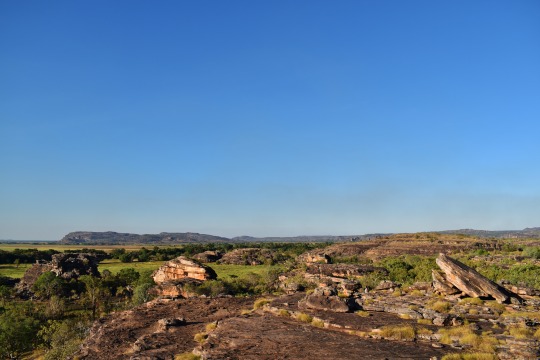
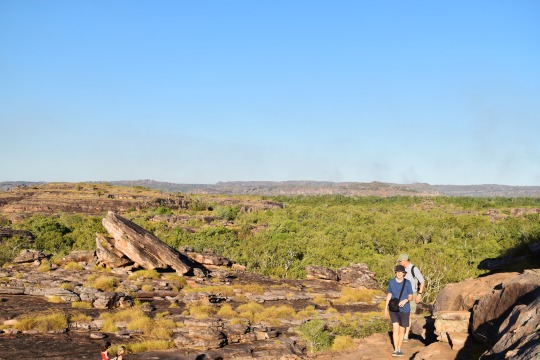
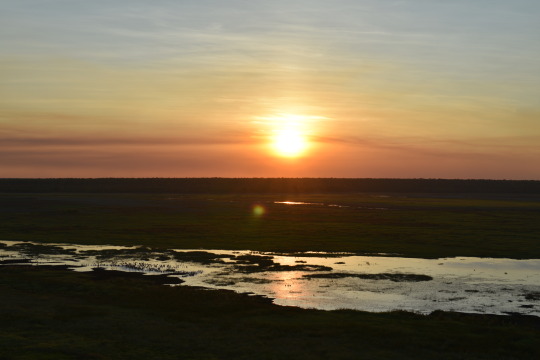
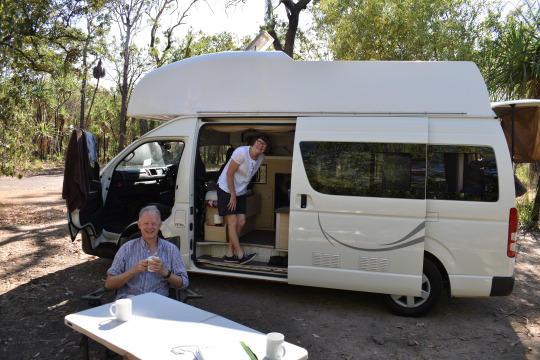
We’d heard there might be a possibility of seeing crocs in Kakadu although none of us were convinced we actually would. However, a stroll to Cahill’s Crossing proved us all wrong; on arrival we could see the ominous backs of about 12 crocodiles swimming around in the inaccurately named ‘East Alligator River’. There were locals fishing in the river standing scarily close to the edge, given that behind them were multiple collections of flowers and crosses commemorating people who had been killed in recent years by getting just that bit too close! It was incredible to see the crocodiles climbing out of the water and watching their size triple from what it had appeared in the water!

All those black dots in the water? Crocodiles!

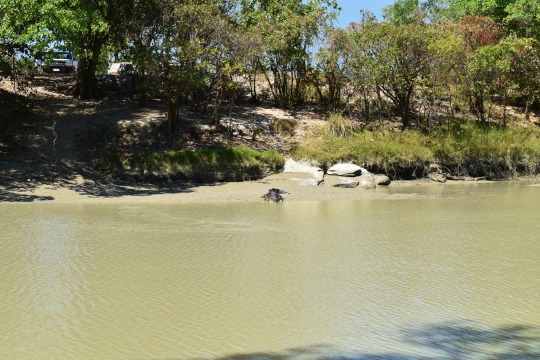
A stunning walk around Bardedjilidgi sandstone outcrops and a steep hike up to Nawlandja lookout overlooking the Nourlangie escarpment provided some of our first exposures to the incredible Kakadu landscape! Given how much land was burning all the time (at one point there were embers right up to the road we were driving along), we were surprised at how green the landscape was.
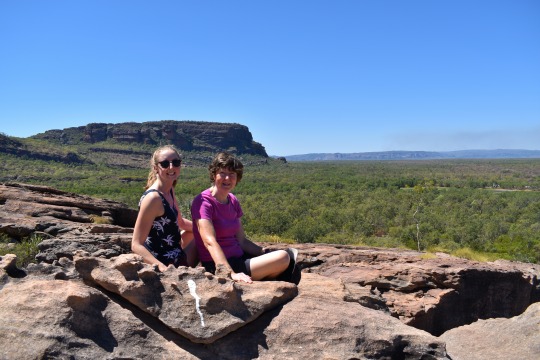
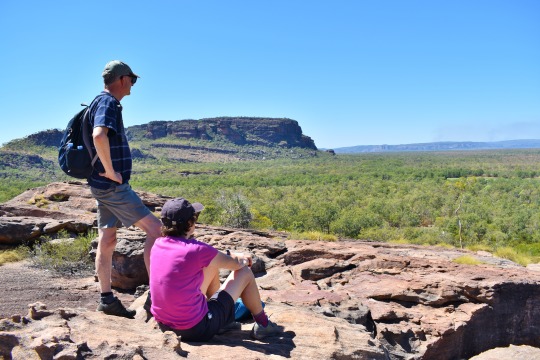

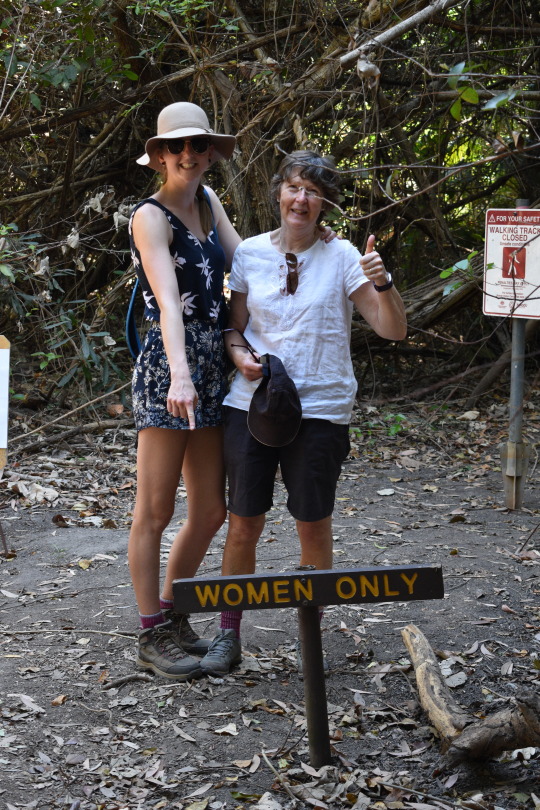
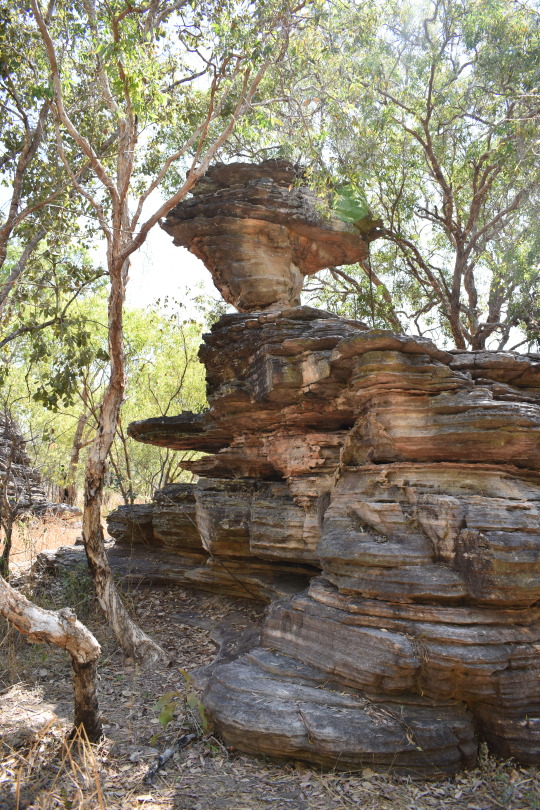
We braved another close croc encounter on a walk around Anbangbang billabong and also spotted our first Jabiru! It looked absolutely enormous – especially in comparison to all the other birds on the billabong!

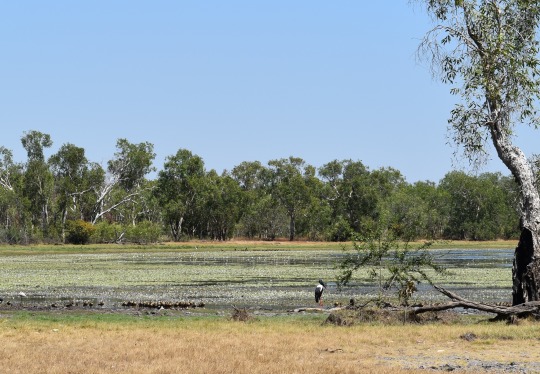
Spent the night at an unexpectedly beautiful campsite on the Mary River where we were surrounded by wallabies and kangaroos!
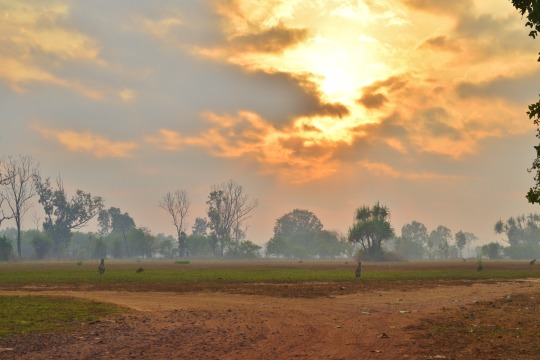

It was time to head across to Litchfield National Park – a smaller area and surprisingly quite different landscape to Kakadu given its relative proximity. We stopped off en route at the ‘magnetic termite mounds’ – so called as they are aligned with their main axis running north to south and orientated such to minimise midday sun exposure and warmth inside the mound. There were also some enormous mounds- up to 5 metres high!
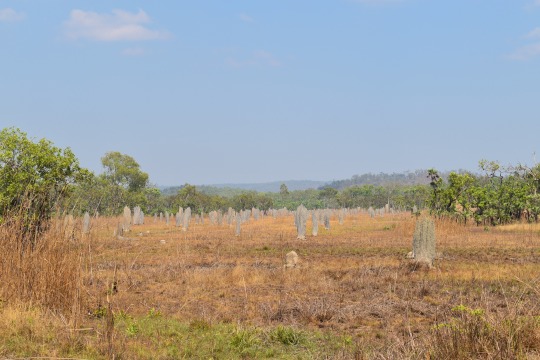

We did a walk to Buley rockholes (which themselves were full of people swimming) but we found our own private one just a few minutes downstream to have a much-needed refreshing dip! Our walk took us down to the popular Florence Falls, and then onwards to the stunning Wangi Falls where we were staying the night! Wangi falls had been closed until the week prior due to crocodile sightings so it was safe to say my mum did not look one bit relaxed for the beautiful sunset swim in there!
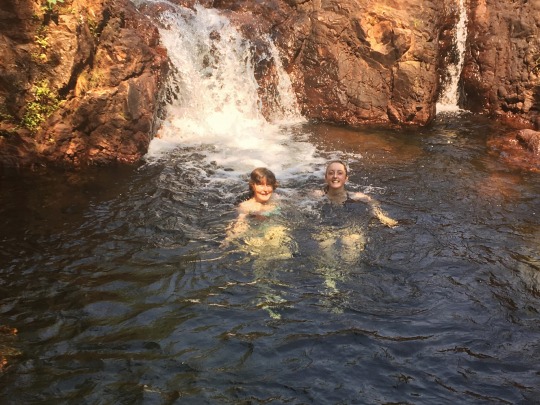
Buley Rockholes
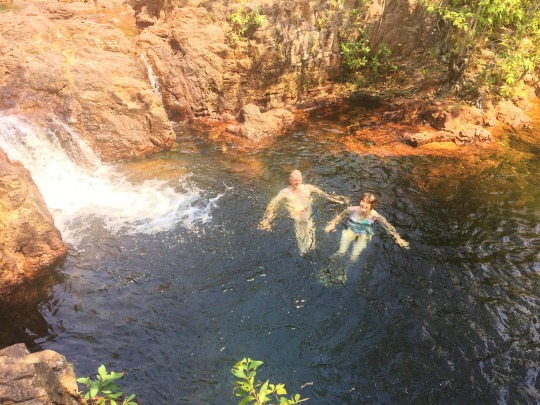

Wangi Falls
We squeezed as many hikes as we could in our short time in Litchfield so our last full day there was spent hiking along the Upper and Lower Cascades (literally clambering down a waterfall). It was so hot and we found an inviting rockhole mid-hike but had left our swimmers in the van– my dad and I are not ones to miss out on a plunge pool swimming opportunity so we just jumped in in our clothes! Lunch was at the top of yet another waterfall amid the Tjaetaba walk through a sharp contrast of monsoon forest and savanna landscapes! We finished the day with a walk around the Tolmer falls which were worth our close shave with heat stroke in the high temperatures of the afternoon!


We briefly explored Darwin town centre and harbour before driving to the airport for our flight to Alice Springs for our Red Centre adventure!
Flying in we could see no evidence of any human life anywhere close until we got off the plane and saw there was in fact an airport there! It had just been expanses of red dirt as far as the eye could see, with no town in sight! We were staying in an amazing ‘glamping hut’ I found on Airbnb called Under The Hump. Sitting outside by the firepit having our kanga steaks with a beautiful view of the stars will certainly be one of me lasting memories of Alice! We weren’t quite prepared for the cold weather we would be faced with though – going from 32 degree mornings to 3 degrees was a bit of a shock to the system!
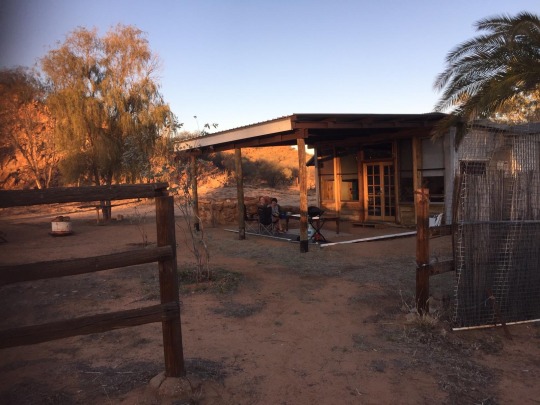
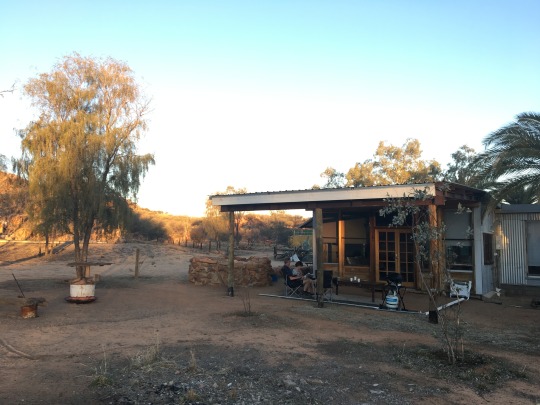
We explored the town and rather fell in love with its character! A small sleepy town surrounded thousands of miles of desert! Having lived by the coast all our life we realised it was the furthest any of us had ever been from the sea!
We explored the famous Todd Mall markets, and went to the Todd River (I was hugely disappointed by this as was expecting an actual river and was met by an expanse of sand. Apparently I was the only one to not be aware that this would be the case. My Tripadvisor review would be a generous 1star as far as rivers go. Same goes for the actual Alice Spring which I didn’t realise we had even seen until I was told later – because it was again just sand.) We spent a fascinating few hours at the National Women’s Pioneer Museum at the old gaol and a visit to the Telegraph station which allowed telegraphs to be sent between Adelaide and Darwin and was the site of the first European settlement in Central Australia (I imagine the Spring actually had water in it at that time….) – although should be acknowledged that the Arrernte people have inhabited what is now Alice Springs for thousands of years prior!


One of my favourite days of the trip was exploring the absolutely breath-takingly beautiful West MacDonnell ranges along the Larapinta trail. We started about 2 hours from Alice at our furthest point, Glen Helen Gorge. It was a deceivingly cold day despite the basking sunshine so we passed on taking the ‘refreshing dip’ here and felt for the many people we saw running who were doing a 4 day Larapinta trail run!

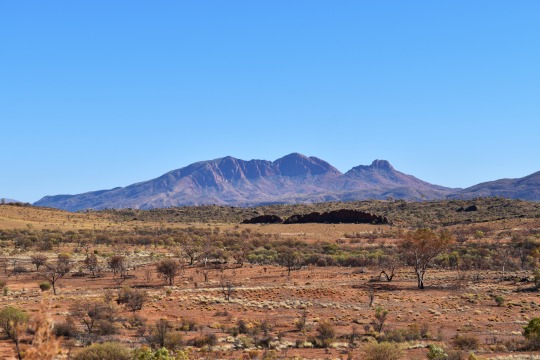
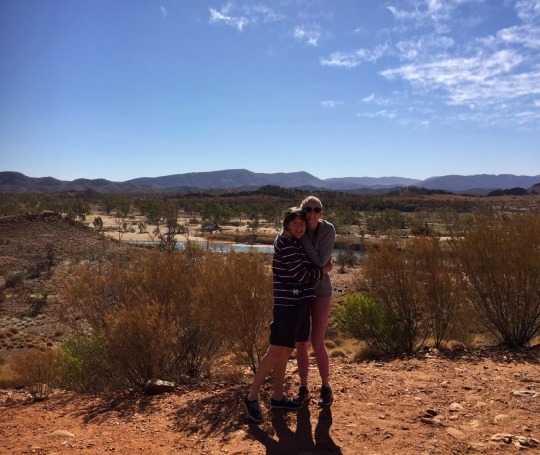
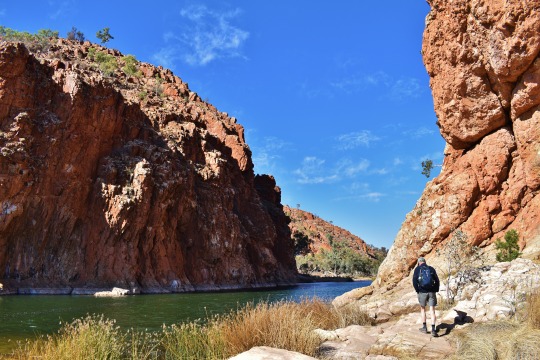

Mum trying to protect herself from the cold wind!
The next stop was the stunning Ormiston Gorge with hike around the top and through the middle of the gorge (which again had no water because dry season!). The other stops along the way are probably best described with photos rather than words. They included the Ochre pits where indigenous people collected ochre to use for rock and body paintings, which they used to tell Dreamtime stories and in ceremony; Serpentine Gorge with a steep hike up to a lookout over the West MacDonnells; Ellery Creek Hole and Simpsons Gap. We had hoped to see a few rock wallabies along the way but unfortunately they may have been hiding away from the cold!
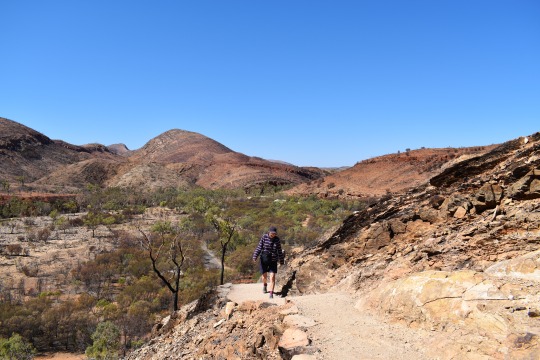


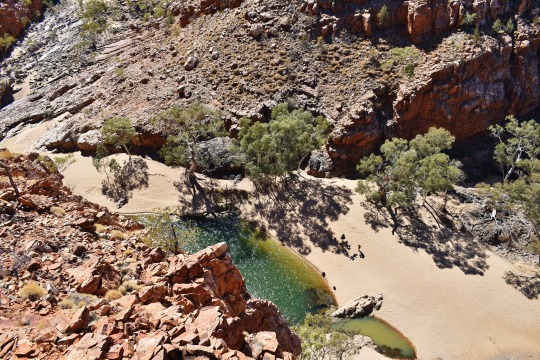
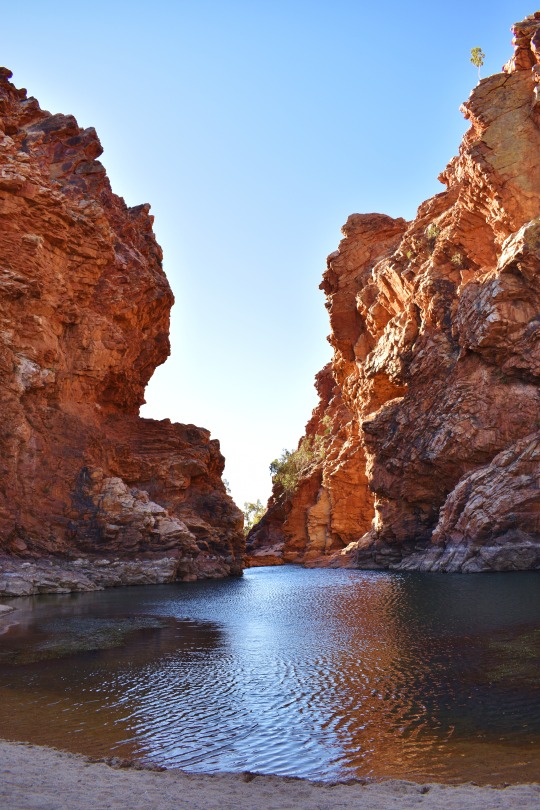


It was a long 5 hour drive down to Yulara (the small resort town for Uluru). 5 hours along a straight road with fairly barren red dirt desert either side; even just this relatively short distance made us appreciate how enormous and sparse this country is. We caught our first glimpse of Uluru and Kata Tjuta from afar as we approached and what a beautiful sight it was! We found a viewing area next to our accommodation where we watched our first of many Uluru sunsets!
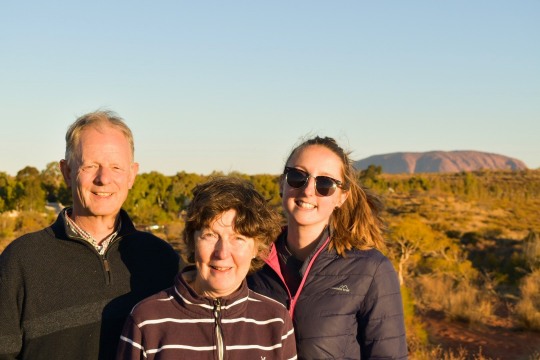
We spent the next 3 days exploring the National Park, learning about the significance of Uluru to the Anangu people and all about the local culture and traditions. Seeing Uluru up close was much more impressive than I'd imagined; what looks like a fairly uniform rock from far away is made of up so many caves and gorges and rock formations which all have cultural significance and stories behind them!

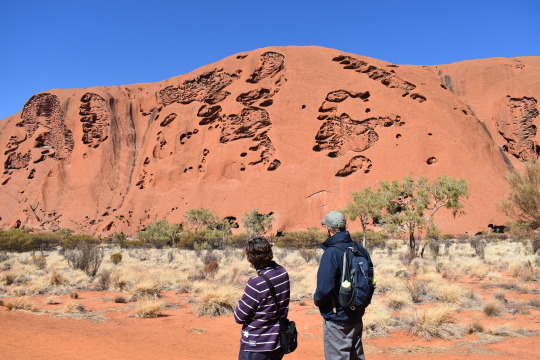
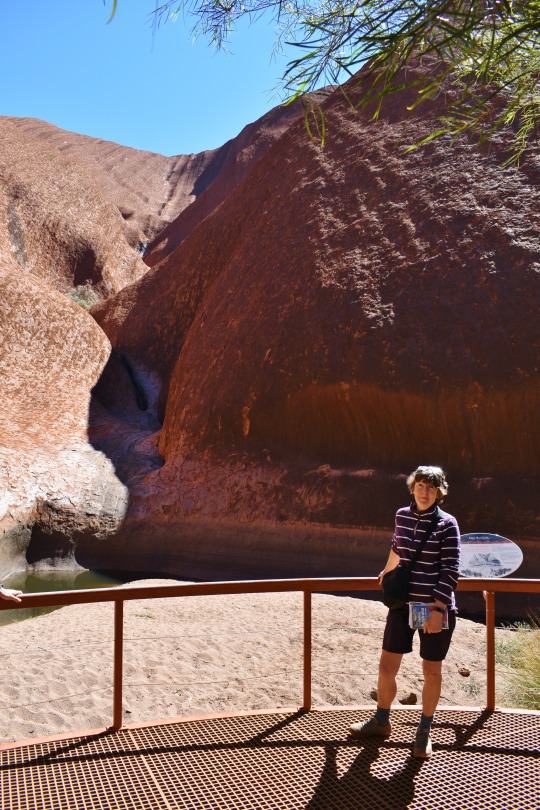
Mutitjulu Waterhole
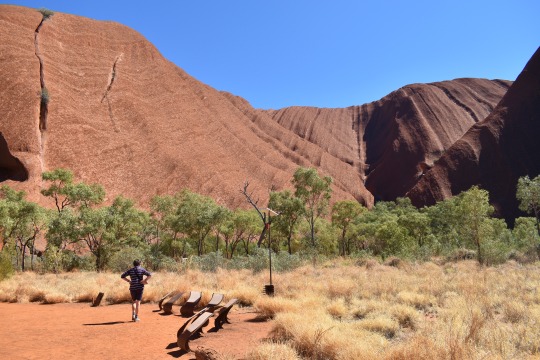
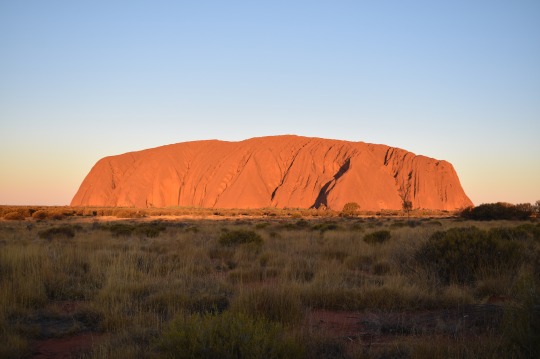
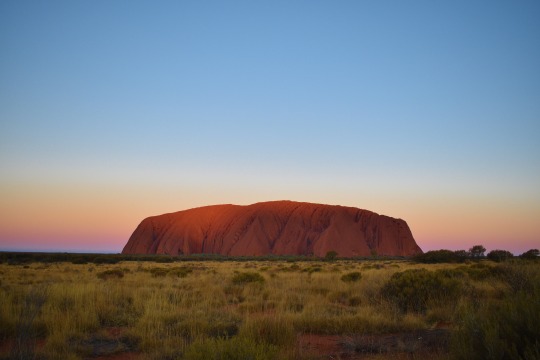
The other place of significance in the National Park is Kata Tjuta (the Olgas) which is a contrasting collection of rocks (the formation of both Uluru and Kata Tjuta seems to be still very much undecided so I’m struggling to know what to call them!). We did an absolutely stunning hike there called the Valley of the Winds with some breathtaking viewpoints.
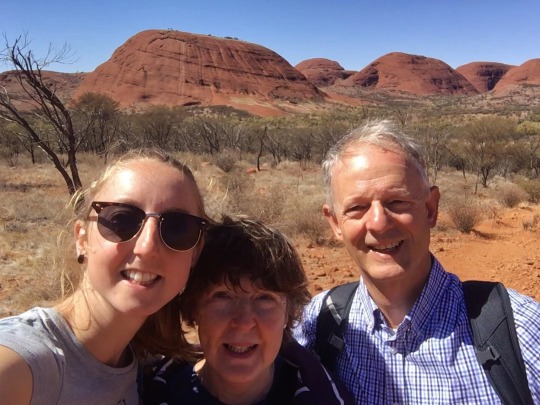
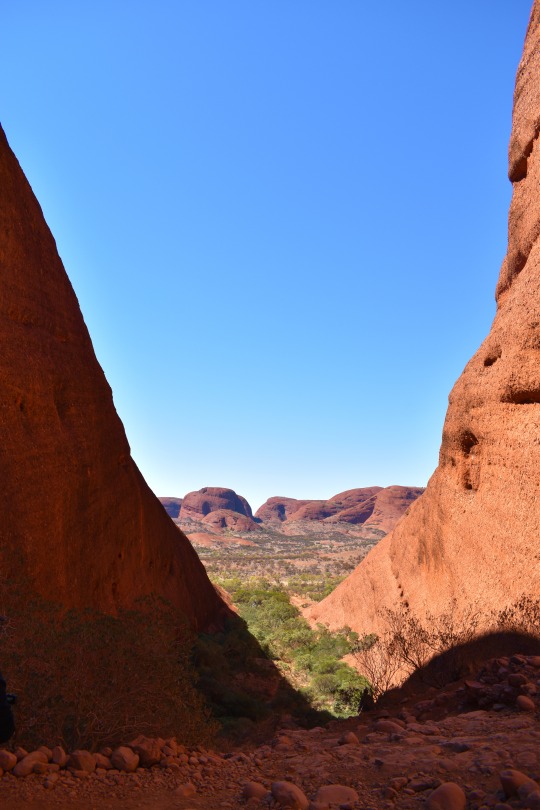
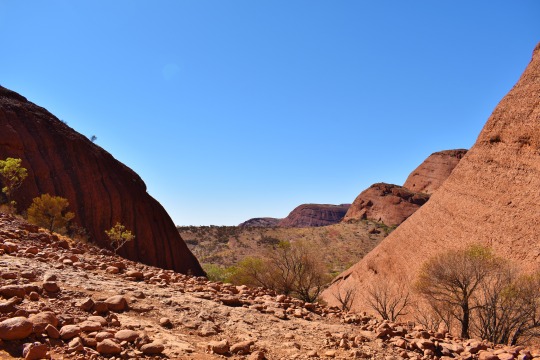
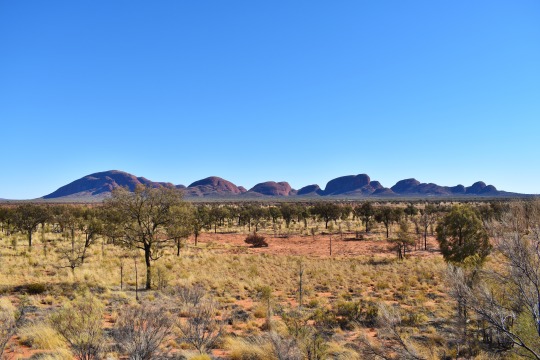


After lots of beautiful sunset viewings, we braved a very early start, armed with a thermos of hot tea, to drive into the Park to watch the sunrise. It was certainly a popular event but we could see why – watching the colours change over Uluru with Kata Tjuta in the distance was just spectacular!
Our legs were exhausted from a lot of hiking so we spent our last day going to workshops and talks put on by the resort, learning about bush tucker, aboriginal hunting tools and even a didgeridoo lesson!



It was time to fly back to Newcastle but what a trip of a lifetime we’d been lucky to experience! It was great to finally show my mum around the place I’ve talked so much about over the past 5 years and to take her back to Sydney to see where they both lived 31 years ago, and meet up with some of their old friends!
Sadly, their life back in England called, so it was another goodbye but we parted ways with so many incredible memories to last a lifetime!
It was back to hospital life and the revision grind for me....
2 notes
·
View notes
Text
5 Compelling Reasons to Escape in Kakadu

If you only have time for one day trip from Darwin, exciting adventures group tours in Kakadu National Park should be top of your list. The region is home to Australia's best-known natural wonders and some of the most stunning scenery in the country.
It has something to offer everyone: travellers who love hiking and camping can explore remote gorges by foot or canoe.
Let’s know more reasons to visit Kakadu in this article,
One of the few World Heritage Sites
Kakadu is one of the few World Heritage Sites that you can escape to.
It's a natural wonderland and one of Australia's most popular national parks, with a unique cultural heritage that dates back thousands of years. It's home to some of the oldest rock art in Australia, as well as diverse wildlife including crocodiles and birds like rainbow lorikeets.
Natural wonderland
Kakadu National Park is a natural wonderland and one of Australia's most popular national parks. It is located in the Northern Territory, approximately 600 km south-east of Darwin. The park covers an area of 16,000 square kilometres, which makes it the third largest national park in Australia.
Kakadu National Park offers visitors many opportunities for adventure such as hiking through its rugged landscape or swimming in its pristine waters.
The wildlife is plentiful, diverse and highly accessible
There are countless ways to see wildlife in Kakadu National Park. The park boasts more than 2,500 species of animals and plants, making it one of the most biodiverse places on Earth.
You can also spot animals from your car while driving with group tours Kakadu park's roads or hiking on trails like Walkabout Creek Walkway or Serpentine Gorge Trail. If you're feeling adventurous and prepared for hot temperatures, you can opt for a helicopter tour over Kakadu's landscapes with Flight line Tours Australia's aerial safaris that offer views of waterfalls, rock formations and wildlife hotspots.
Home to more than 80 Aboriginal sites
If you're looking for a truly authentic experience, Kakadu National Park is home to more than 80 Aboriginal sites and rock art galleries. The oldest living culture on earth can be found in Kakadu, which boasts some of the world's most significant rock art galleries.
These galleries are accessible to visitors who want to learn more about this part of Australia's history and culture.
Constant source of inspiration
The landscape of Kakadu is a constant source of inspiration for artists, photographers, writers and nature lovers from all over the world. It's a place where you can feel your heart beat faster as you take in the sheer beauty of it all.
Kakadu National Park is home to some of Australia's oldest rock formations, including Rainbow Valley which features layers upon layers of sandstone deposited by ancient seas over millions of years ago.
Conclusion
If you're looking for an escape from the hustle and bustle of city life, , group tours Kakadu National Park is the perfect place to go. The diversity of wildlife and landscapes makes it one of Australia's most popular national parks, attracting thousands of visitors every year. Your visit will be unforgettable!
Source URL: https://www.storeboard.com/blogs/travel/5-compelling-reasons-to-escape-in-kakadu/5613372
0 notes
Text
Places to Visit During Winters in Darwin
Are you planning a campervan rental Darwin trip to the places near the city. There are several day-trips that you can take and enjoy winters during your stay in Darwin. If you are a local, you should definitely try to take one or more of these trips to enjoy a picnic day or a weekend with your friends/family. Let’s talk about some of the popular day trips that you cannot miss. 1. The trip to Litchfield National Park is one of the most recommended trips around Darwin. It houses the waterfalls and swimming holes, which are popular even during the winters. You can take a walk along the route that follows the waterfalls and enjoy some rendezvous with nature while in this park. 2. If you want to spend an hour’s time on road, you can reach the Mary River for your day trip. It is an enjoyable journey and quite an accommodating place. Apart from being one of the top rated picnic spots, it also houses several spots for bushwalking, which is an interesting adventure here. You can look at the wild billabongs while you are here. The river is full of crocodiles, which means you can just sit on the banks and not enjoy swimming in the waters. You can get your motorhome hire Darwin to this spot. 3. If you want to watch a movie under the stars, here’s the perfect place for you. Winters are definitely the time when you should go and enjoy a movie at Deckchair Cinema. It gives out the special aura of being nice and romantic. You will definitely enjoy the time spent there 4. If you are an animal lover, you can try going to the eco tours in the sea in Darwin. You are more likely to spot a turtle while on the tour. It is an incredible learning and one of the finest adventures that the town can offer. You can take your campervan rental Darwin to the spot before jumping into the tour operator’s boat. You will also get a complete tour of the ritual to lay eggs followed by the turtles. 5. Kakadu National Park is one of the biggest and finest places near Darwin that you should visit while there during Winters. It is perfectly designed to suit the cold weather conditions. You have several rock sites and small places around that you can explore while in that park. You might get a peak into the waterfalls reigning the place. You could also visit the Jim Jim falls or take a trip to Maguk George. 6. The next on your list of day trips should be Crab Claw Island. It is about an hour away from Darwin and one of the finest winter day trips. You can go there to enjoy fishing and some family time. you can take a ferry to spot some of the popular crabs in this route. You can take your motorhome hire Darwin to explore this place and enjoy a day’s picnic there 7. If you want an ideal nature park type day picnic, you should visit the Berry Springs. You will be closer to nature with the wide green paths, beautiful bush trails and native birds and reptiles.
0 notes
Text
100 day update.
I never planned to go to Australia. Of course, at some point I decided that I would come to live here and had to start working towards it. But to be honest, I can’t remember a distinct moment when I thought to myself “Yeah, I definitely want to go to Australia”. I grew up obsessed with Steve Irwin, who fostered my love for animals, and all things that seemed to push the border of normal. Maybe it was something that had been manifesting in me since childhood. Whatever the reason was, I left home knowing next to nothing about the country I was headed to. I knew the names and locations of a few capital cities, and that it was home to some of the world’s most deadly animals, but that was it. Suddenly one day I found myself at the airport saying goodbye to my parents with my backpack, and that was it. I was on a plane, and I had no idea where I was going or what I was getting myself into. I was absolutely terrified, but I couldn’t wait.
Maui was incredible. It was a dream holiday, and exactly what I needed after 70 hour/ 6 day work weeks. Yoga in the mornings, beach hopping, sunbathing, day drinking, jungle trekking, waterfall climbing, snorkeling with sea turtles, and partying the night away with new friends from around the world; it was the perfect “welcome back” to the backpacker hostel lifestyle I had missed. Breathtaking landscapes, friendly hostel mates, delicious food, long days, late nights, and the slow-paced island lifestyle was the cocktail I needed to kick off my working holiday. It was one of those destinations that make you want to freeze time and stay forever. Eventually though I woke me up from my island dream after managing to lose my wallet (the day before moving overseas!? No worries!).I spent most of my last day on Maui on the phone waiting on hold with my bank, eventually my roommate managed to coerce me into an afternoon beach hopping break to relieve me from the stress. I laid on the shore of Makena beach while I reminded myself of Bob Marley (and my Dad’s) words “Every little thing is gonna be alright…”
Sleeping in airport terminals isn’t the most glamorous part of traveling, nor is it my favorite, but it’s something that I’m no longer a stranger to. I had an overnight layover in Honolulu, where the airport welcomes stranded travelers with a designated area to sleep in. While the benches didn’t make the most comfortable bed I’ve ever slept on, I was able to catch a few hours of good rest. In the morning I woke to a beautiful sunrise bidding me a final goodbye from the states, and after the longest walk of my entire life to the other side of the world in the terminal, and a goodbye call to home I boarded my plane. A window seat in econcomy on a budget airline promised me that a year of adventure laid just a sore neck and a close of my eyes ahead.
The day I arrived in Sydney I felt pretty overwhelmed. I had just moved to the other side of the world, and since I’d lost my wallet, I only had the bit of cash I had brought with me. I was feeling pretty grateful for an exchange rate that worked in my favor, a hostel kitchen with 8 (eight!!!!) stoves, and a clean bed to relax in after the journey over. My first priority was to get my money sorted; it didn’t take long for the Sydney sticker shock to set in and I knew I needed to work it out. I was up with the sun my first morning to head to the bank where I learned two things: 1. It gets cold in Sydney (who knew that Australia actually has a winter too?!) 2: It would be over a week before I could get access to my money Deep breaths, everything is going be alright. Stressing out about it wasn’t going to get me anywhere. I’ve got this; I’ve done the whole hungry budget backpacker thing before. No worries.
In the midst of work/life chaos before leaving home, I had decided to book my first week in Sydney with a tour company. This was my first time doing organized travel and although it lacked a little freedom, I was glad that I had decided on it. They had set up my accommodation for the week and a few meals, so I didn’t have to worry about spending too much until I could get my card. I was grouped with some lovely and hilarious English and Canadians who were also starting out on their working holiday visas. It was comforting to be around people who were in the same boat as me, but it also was a bit strange to be at the mercy of whatever was planned for us. 6 days and 5 nights in Sydney and Port Stephens: complete of course with the obligatory city walking tour and pub crawls. It was an interesting change of pace from the travel that I’m used to. No planning on my part, just “Show up here at this time and we’ll take care of everything for you”. A harbor cruise and boat barbecue, an evening exploring the dazzling VIVID Sydney displays, yoga with kangaroos at an eco-hostel, a hike through Tomaree National Park, boarding through sand dunes, restaurants with food that looks like it came straight out of one of those trendy facebook videos, drinking games, nights out dancing, and a sales pitch just every now and then to gently remind you that your tour leader was getting paid to hang out with you. While it was fun to have my days filled with things that I probably wouldn’t have done on my own, I was desperate for a little independence which I was able to find at a couchsurfing meet-up.
I fell in love with couchsurfing while I was in Ireland a year ago. I was in Dublin, my first big city on my solo Europe trip and I joined a meet up for a hike on the coast of Howth, a fishing village an hour bus ride outside of the city. After our walk through the cold wind and rain, we took refuge at a jazz and blues festival pub crawl. Hours went by chatting to each other and listening to music before heading back into the city together. I had never met so many people from so many different places, and being new to traveling it blew my mind to feel so welcomed by everyone; I knew that I would definitely be doing it again. Shortly after I had gotten home from Europe I started attending meet up every week in Phoenix. I haven’t surfed yet, but I definitely plan to soon. When I got to the bar in Sydney, I was greeted by friendly faces, and after watching fireworks over Darling Harbor, I was invited to head to someone’s flat for pre-drinks followed by a Friday night out. I didn’t need much convincing, but the promise of free drinks and new friends made any hesitations I might have had disappear.
After a week in Sydney, I was ready to move on. My bank was going to forward my card to me, so all that was left to do was set up my phone plan, book my flight, and then I was ready to head out on the next chapter of my journey. After a bus ride, a flight, another flight, a bus, a few hours of sleep, and another bus, I arrived at my new home away from home. The Northern Territory: home of crocodiles, and barra fishing; where winter is a sunny 40 degrees Celsius, and men brag about the size of their fish. I would be spending the next 88 days working remotely in Kakadu National Park. Remote work is required by Australian Immigration to extend your Working Holiday visa from 1 year to 2 years. Where and what you can do depends on which visa you are on. But for me, this meant administration work at a hotel.
My bus left from Darwin at 6:30 in the morning, and after a 3.5 hour ride through the middle of nowhere, the bus pulled over and it was my turn to get out. It felt like a scene from a movie, getting off the bus with my backpack, walking through the doors of this little green hotel in the desert. Things moved pretty quickly as soon as I arrived and I started work the next day. It took a few days to get situated, but everyone I worked with were backpackers, so it didn’t feel too unfamiliar. What did take some getting used to was the isolation.
Kakadu National Park is more than half the size of Switzerland, and with a population totaling just 1130 people, it’s easy to feel small in such a big space. The hotel is a half hour drive from Jabiru, the only town in the park, which boasts a shopping center featuring a small grocery market, library, bank, police station, hairdresser, and an Olympic sized swimming pool (to which I regularly wonder how on earth they managed that). It’s pretty much impossible to get anywhere around the park if you don’t have a car without hitchhiking, however I managed to make it away from the hotel quite a few times in my first month. My first trip was to Yellow Water Billabong. We spent the afternoon on a river cruise learning about some the Aborignal history in the park and the unique wildlife, bird watching, looking for buffaloes, and of course, spotting crocs. A few days later we were off to Ubirr, the largest rock art site in Australia. On our way, we stopped at Cahills Crossing, the border to Arnhem land, where the aboriginal community live. At high tide when the river flows over the crossing, you can be eaten alive by mosquitoes while watch crocodiles at the edge of the water, waiting for fish to be pushed into their mouths. After finishing the climb to the top of Ubirr, you are welcomed by a 360 degree view of the park. Being there felt like I had been taken back to the Jurassic age. Looking out across the wetlands, I half expected to see a dinosaur, or lions and elephants walk across the plains. During this time of year, Wurrgeng season, the locals burn the land to prevent bush fires and help restore nutrients to the soil. The smoke from the controlled burns turns the sky beautiful colors, and the sun a deep glowing red. It’s a picture that each time I’ve visited reminds me of the opening scene from The Lion King.
Remote living is a unique experience. You work, sleep, eat, live, and play all in the same place with the same people. Imagine laying out in your backyard at the pool with a book on your afternoon off, then your manager walks through your back gate to let you know that the schedule has changed and now you need to be back in the office to close in half an hour. It’s your day off and you’re having a late breakfast in your kitchen in your pajamas, and in they come to tell you all of the things they would like you to do tomorrow. Work-life balance does not exist, they are one and the same. This made the work become frustrating quickly, and management challenging to deal with to say the least. As staff you quickly learn to rely on each other: celebrating small victories together, acting as an outlet for frustration, and taking a little extra time and effort to do things as a group. I found the answers to “what will I do tonight?” were different than they had ever been. Taking dinner out to the grass for a picnic instead of eating in the kitchen, grabbing a beer and going for a walk to the billabong at the back of the hotel, being workout buddies at the gym, drinking until late (which now meant 10pm) doing puzzles, playing and billiards in the rec room, or playing cards sprawled across the floor of your hotel room.
Of course my favorite days were my days off. While there were certainly hardships to living in the middle of nowhere without my own mode of transportation, it was the first chance I’d had in a long time to learn how to live life slowly. I no longer had to wake up early on my day off to make it to Bikram Yoga, or run to the grocery store and spend hours cooking in the kitchen (although I do miss those things dearly now). I could be lazy ,and not feel bad about it! I could sleep until my body decided it was time to get up, head to the gym when I felt like it, float in the pool for hours, listen to a podcast during a walk through the forest, read a book in my hammock, practice yoga at the gym, and still have hours left in the day to burn (my hula hoop, of course). And on the days when I felt like I had cabin fever coming on, I had the entirety of the park at my doorstep. A spur of the moment decision and catching the boss in a good mood meant you could ask for the keys to the company car. Maybe having an early afternoon off meant going for a drive to the Mamukala Billabong for some birdwatching, over to Burrunkguy to admire more rock art, and then to Nawurlandja to watch the sunset. On one of my lucky days I had the day off with someone with a car and we took the 3 hour drive through the park to Gunlom Falls. A 25 minute hike up a steep cliff led us to breathtaking views at the top of the waterfall (and with crocodiles being one of the most populous residents of Kakadu) meant one of the rare chances to swim in the infinity pools. One day after catching a late bus and being temporarily stranded, I even worked up the courage to try hitchhiking. It was a rough go at first, but after half a bottle of sunscreen I got picked up by a fisherman that took me to the South Alligator river. We cast a line out together and watched crocodiles swim by before taking me back to the hotel.
As backpackers, this was only our temporary home, and we all had another adventure planned when our 88 days came to an end. The nights before we said good bye were always my favorite: both fun and bittersweet. The bonds that formed over such close quarters always hurt a bit to sever, but it was impossible not to be excited for them to continue on their own journey.
One of the biggest things I have learned from traveling is to let go of my expectations. I didn’t really know what it would be like or what would happen living here, but I can say easily that most of this had never crossed my mind. The past 100 days have been a roller coaster ride of emotions and adventure, and as I enter my last week at Aurora Kakadu, I can’t contain my excitement for the future. I’m so grateful to all the people I have met along the way. What an incredible opportunity, to live in such a uniquely beautiful place (I mean come on, how many people can say that they’ve lived in a National Park that’s a dual listed UNESCO World Heritage site?!). It’s offered a unique glimpse into Aboriginal culture, and it has been a once in a lifetime experience that I will never forget. I’m looking forward to getting back on that bus in a few days and taking all the lessons that I’ve learned with me on my way. In 8 days I will be on a plane on my way to Queensland (home to the zoo of my childhood hero) to explore The Daintree Rainforest, and The Great Barrier Reef.
100 days down since leaving home, 269 days left in Australia, and then…. We’ll see.
11 notes
·
View notes
Text
Adelaide River Tours: A Perfect Day Trip from Darwin

As a nature enthusiast visiting Darwin, I knew I had to experience the iconic Adelaide River Tours. This adventure offers a perfect blend of wildlife, stunning scenery, and excitement, making it an ideal addition to any Darwin to Kakadu day trip.
Early Morning Start
My day began with a refreshing drive from Darwin to Adelaide River, taking about an hour. The landscapes changed dramatically along the way, showcasing the lush greenery and open spaces of the Top End. While many travelers focus solely on the Darwin to Kakadu day trip, the opportunity to visit Adelaide River should not be overlooked.
The Adventure Begins
Upon arriving at the tour base, my excitement peaked. The Adelaide River is famous for its saltwater crocodiles, and the “Jumping Croc” cruise was the highlight of my visit. Climbing aboard the boat with fellow adventurers, I was eager to witness these magnificent reptiles in their natural habitat.
Our knowledgeable guide shared fascinating insights about the ecosystem and the crocs that inhabit the river. As we cruised along, I felt a thrill of anticipation, knowing we were surrounded by some of Australia’s most formidable predators.
Up Close with the Crocs
The action began almost immediately. Our guide dangled a piece of meat over the side of the boat, and in a flash, a massive crocodile leaped from the water, snapping its jaws just inches away from us. The sheer power and agility of these creatures were astonishing, reminding me of their prehistoric nature. Each time a croc jumped, I felt a mix of exhilaration and awe.
Throughout the tour, we spotted various crocodiles, some lurking at the water’s edge while others swam confidently toward our boat. Beyond the excitement of the jumping crocodiles, the guides emphasized the importance of conservation, making the experience both entertaining and educational.
Why You Should Go
If you’re in Darwin and planning a Darwin to Kakadu day trip, don’t miss the chance to experience Adelaide River Tours. This adventure immerses you in the beauty and diversity of Australia’s wildlife and landscapes. Whether you’re a thrill-seeker or a nature lover, Adelaide River Tours offers something unforgettable for everyone.
0 notes
Text
Waterfalls, Wildlife, and Wilderness: A Guide to Litchfield National Park
Nestled in the heart of the Northern Territory, just a short drive from Darwin, Litchfield National Park is a true wilderness paradise that offers visitors a remarkable blend of waterfalls, wildlife, and natural beauty. Known for its stunning landscapes, the park is a haven for nature lovers, adventurers, and those seeking a peaceful escape from the hustle and bustle of city life.
From the towering cascades of Wangi Falls to the eerie elegance of the Magnetic Termite Mounds, Litchfield is a place where every corner reveals something unique and awe-inspiring. Whether you’re hiking through lush rainforests, swimming in crystal-clear rockholes, or spotting native wildlife, the park provides endless opportunities for exploration and discovery. Its diverse ecosystems—spanning from wetlands to woodlands—are home to a wide variety of plants and animals, making it a must-visit for wildlife enthusiasts.
In this guide, we’ll take you through the park’s most iconic features, including its breathtaking waterfalls, its fascinating wildlife, and the outdoor adventures that await. We’ll also share practical tips to help you make the most of your visit, ensuring that your trip to Litchfield is as enjoyable and memorable as the park itself. Whether you're a seasoned hiker or a first-time visitor, Litchfield National Park promises an unforgettable experience in one of Australia’s most stunning natural wonders.
Introduction: Discovering Litchfield National Park

Located just a 1.5-hour drive south of Darwin, Litchfield National Park is a true treasure of the Northern Territory, offering visitors an accessible and breathtaking wilderness experience. This 1,500-square-kilometre park is an extraordinary blend of cascading waterfalls, pristine swimming holes, ancient geological formations, and a rich tapestry of wildlife. Whether you’re visiting for a day trip or planning a longer stay, Litchfield presents the perfect opportunity to escape the city and immerse yourself in nature.
Litchfield’s allure lies in its diverse landscapes, where rainforests meet monsoon woodlands and ancient sandstone plateaus. The park is most famous for its stunning waterfalls, which include the iconic Wangi Falls, Florence Falls, and the more remote Tolmer Falls, each offering its own unique charm. Whether you’re hiking to a waterfall viewpoint or cooling off in one of the park’s rockholes, the beauty of Litchfield’s natural wonders is impossible to ignore.
Beyond the waterfalls, Litchfield is home to some fascinating geological features, such as the famous Magnetic Termite Mounds, whose towering structures are aligned with the Earth’s magnetic field. The park’s diverse ecosystems also support a wide variety of native wildlife, including birds, reptiles, and mammals, making it a fantastic destination for wildlife enthusiasts and photographers.
With its abundance of outdoor activities, from hiking and bird watching to swimming and camping, Litchfield offers something for everyone. This guide will take you through the park’s key attractions, practical tips for visiting, and insights into how to make the most of your time in this wilderness wonderland. Whether you're a first-time visitor or a seasoned explorer, Litchfield National Park is a destination that will leave you in awe of nature’s beauty and power.
Breathtaking Waterfalls: Nature's Cascading Beauties
Litchfield National Park is renowned for its stunning waterfalls, which are among the park’s most captivating natural features. With their dramatic falls, crystal-clear pools, and lush surroundings, these waterfalls offer visitors a chance to witness nature’s raw beauty up close. Whether you're swimming in a tranquil rockhole or enjoying a scenic hike, the park’s waterfalls provide some of the most picturesque and memorable experiences in the Northern Territory.
1. Wangi Falls: A Tropical Oasis
One of Litchfield's most popular and accessible waterfalls, Wangi Falls is a true highlight of the park. Situated in a lush monsoon rainforest, the falls drop over 50 meters into a large, crystal-clear pool below, making it the perfect spot for a refreshing swim. The surrounding area is dotted with picnic spots, making it a great place to relax after a dip. There is a well-maintained walking track that leads from the car park to a lookout, offering panoramic views of the falls and the surrounding tropical forest. While the waterfall is especially impressive during the wet season, it flows year-round, providing a peaceful retreat for visitors no matter the time of year.
2. Florence Falls: A Double Cascade in a Pristine Setting
Another must-see waterfall in Litchfield is Florence Falls, a stunning double waterfall that plunges 40 meters into a deep, clear pool. Nestled in a forested gorge, the falls are surrounded by lush vegetation, providing a secluded and serene atmosphere. Florence Falls is easily accessible, with a short, well-marked walking track leading to a viewing platform. For those feeling more adventurous, a longer trail leads down to the base of the falls, where visitors can swim in the cool waters. The rockhole at the base of Florence Falls is a popular spot for swimmers looking to cool off and relax while enjoying the peaceful sound of the cascading water.
3. Tolmer Falls: A Hidden Gem with Stunning Views
Less frequented than Wangi and Florence, Tolmer Falls is one of Litchfield's more dramatic and remote waterfalls. With its 40-meter drop, this waterfall tumbles over rugged cliffs into a deep gorge, surrounded by a unique landscape of rocky escarpments and towering trees. The lookout provides spectacular panoramic views of the falls and the surrounding wilderness. While swimming is not permitted at Tolmer Falls due to the presence of freshwater crocodiles, the views from the lookout are more than enough to make the visit worthwhile. The falls are particularly impressive during the wet season, when they flow with full force, creating a dramatic and powerful spectacle.
4. Tjaynera Falls: The Ultimate Hidden Waterfall Experience
For those seeking a more off-the-beaten-path experience, Tjaynera Falls (also known as Sandy Creek Falls) is a beautiful and remote waterfall located in the park's southern reaches. A 4WD vehicle is required to access the area, making it a great option for those who want to explore Litchfield's quieter corners. Tjaynera Falls cascades into a deep, refreshing pool surrounded by stunning rock formations and dense rainforest. It's an ideal spot for a peaceful swim and a perfect way to experience the more secluded side of Litchfield’s waterfalls.
5. The Wet Season: The Best Time to See Waterfalls in Full Force
While Litchfield’s waterfalls are spectacular year-round, the wet season (November to April) brings out their full glory. During this time, the Top End’s tropical rains feed the falls, making them fuller and more dramatic than during the dry season. The increased water flow creates powerful cascades and vibrant waterholes, offering photographers and nature lovers a chance to capture some truly breathtaking scenes. If you’re visiting during the wet season, be aware that some trails or areas may be closed due to heavy rainfall or flooding, so it’s important to check conditions before you go.
6. Swimming and Safety Considerations
Litchfield’s waterfalls are also popular for swimming, offering visitors the chance to take a dip in some of the cleanest and most refreshing water in the Northern Territory. However, it's important to be mindful of safety. Freshwater crocodiles inhabit some of the park’s waterholes, and while they are generally not aggressive towards humans, it’s crucial to follow all posted warnings and guidelines about safe swimming areas. Always swim in designated, safe spots and heed any advice from park rangers or signage.
Magnetic Termite Mounds and Geological Wonders
Litchfield National Park is not only home to spectacular waterfalls and diverse wildlife, but it also boasts some fascinating geological features, none more iconic than the Magnetic Termite Mounds. These natural marvels, along with other geological wonders in the park, provide a unique insight into the intricate relationship between nature and the environment. Visiting these sites offers a glimpse into the forces that have shaped the region over millions of years.
1. Magnetic Termite Mounds: Nature's Architectural Wonders
One of the most distinctive features of Litchfield National Park are the Magnetic Termite Mounds. These towering, spindly structures, reaching up to 4 meters high, are an extraordinary sight against the backdrop of the park’s landscape. What makes them so unique is the termites' remarkable ability to build their mounds aligned with the Earth’s magnetic field. This alignment helps regulate the temperature inside the mound, protecting the colony from extreme heat and providing a stable environment year-round.
The termites, specifically the Nasutitermes species, construct these mounds with incredible precision. The north-south orientation of the mounds is thought to minimize exposure to the sun during the hottest parts of the day, maximizing shade while allowing for ventilation through the mound’s porous design. This natural engineering feat is a perfect example of how wildlife in the park has adapted to the harsh conditions of the Top End.
A visit to the Magnetic Termite Mound Site near the park’s Loop Road gives you the chance to see these fascinating structures up close. There is an informative boardwalk where visitors can learn more about the mounds and the termites that create them. The mounds are particularly striking at sunrise or sunset, when the soft light casts long shadows, highlighting their unique shapes.
2. Geological Wonders: A Story of Ancient Landscapes
While the Magnetic Termite Mounds are the most famous geological feature in the park, Litchfield is home to a wide array of other geological wonders that offer a glimpse into the region’s ancient past. The park's landscape has been shaped by millions of years of geological processes, including volcanic activity, erosion, and the slow movement of tectonic plates.
The Lost City: One of the park’s most impressive geological formations is the Lost City, a series of ancient sandstone structures that resemble a forgotten stone city. These dramatic, weathered spires and rock formations have been eroded over time, creating towering "cathedrals" and narrow canyons that visitors can explore on foot. The Lost City can be reached via a short hike from the Tabletop Track, which offers a glimpse into the area's rich geological history and provides fantastic photo opportunities.
The Tabletop Range: This range, named for its flat-topped mountains, is another geological highlight. The Tabletop Range forms the southern edge of Litchfield National Park and is characterized by steep cliffs, dramatic escarpments, and expansive views over the surrounding landscape. Hiking the Tabletop Track takes visitors to the summit, where panoramic vistas of the park’s wilderness unfold. The geological history of this area dates back hundreds of millions of years, with the towering rocks offering evidence of ancient processes that shaped the Top End's landscape.
The Buley Rockhole & Surrounding Formations: The rockholes in the park, like Buley Rockhole, are another example of Litchfield's geological wonders. Formed over millions of years through the erosion of sandstone, these smooth, water-carved rock formations are not only scenic but also provide a window into the region's history. As you swim in these natural pools, you’re essentially floating in ancient landscapes shaped by time and natural forces.
3. The Role of Water in Shaping Litchfield's Geology
Water plays a pivotal role in the park’s geological landscape. The region’s tropical climate, with its seasonal rains and dry spells, has influenced the erosion processes that have carved out the park’s gorges, waterfalls, and rockholes. The constant flow of water has worn down the once-mighty sandstone formations, leaving behind the dramatic cliffs and rockholes that are so characteristic of Litchfield today.
The wet season, in particular, has a profound impact on Litchfield's geology. As torrents of rain flood the park, they reshape the landscape, altering rock formations and carving new channels. Over time, these natural processes create the beautiful and varied geological features that make Litchfield National Park such a captivating destination for visitors.
4. Preserving Litchfield’s Geological Heritage
Like many natural landmarks, Litchfield's geological wonders are both fragile and irreplaceable. The park’s diverse landscape—ranging from magnetic termite mounds to towering rock formations—has been millions of years in the making. To preserve these natural wonders, it's important for visitors to follow designated paths, avoid disturbing wildlife, and adhere to park regulations. By respecting the environment, we help ensure that future generations can continue to experience Litchfield’s geological marvels.
Flora and Fauna: A Rich Tapestry of Wildlife

Litchfield National Park is a haven for nature enthusiasts, offering a vibrant tapestry of flora and fauna that thrives in the unique Top End environment. With its diverse ecosystems—ranging from monsoon rainforests to open woodlands, wetlands, and rock escarpments—the park supports an impressive variety of plant and animal life. Exploring Litchfield is like stepping into an ever-changing world, where lush vegetation and fascinating wildlife intersect, providing endless opportunities for discovery.
1. Flora: A Diverse Ecosystem of Plants
Litchfield’s diverse landscape is reflected in the richness of its plant life. The park is home to a mix of tropical rainforests, woodlands, and wetlands, with each habitat supporting a unique set of plants. The region’s tropical climate creates a vibrant palette of greens, with towering trees, dense undergrowth, and colorful flowering plants.
Monsoon Rainforests: In areas like the Wangi Falls and Florence Falls, the monsoon rainforest thrives, with towering trees like river gums and pandanus palms, as well as a variety of ferns and vines. These rainforests are incredibly rich in biodiversity, offering a sanctuary for both plant and animal life. The dense foliage provides a cool respite from the heat, while the towering trees create a lush, shaded canopy.
Woodlands and Savannas: On the park’s open plains and higher ground, you’ll find eucalypt forests and savanna woodlands. These areas are home to the iconic stringybark trees and a variety of bush foods, like bush tomatoes and bush bananas, which have been used for millennia by Indigenous peoples of the region. In these more open areas, the ground is often covered in a blanket of grasses and wildflowers that bloom spectacularly during the wet season.
Wetlands: The wetlands, which are most prominent during the wet season, provide an essential habitat for a range of species. The waterlogged areas foster the growth of aquatic plants like water lilies and sedges, and are teeming with life, from fish to insects and birds.
2. Fauna: A Diverse Array of Wildlife
Litchfield National Park is a haven for wildlife, with over 250 species of birds, a wide variety of reptiles, and numerous mammals and amphibians calling the park home. The park’s rich and varied ecosystems provide ample opportunities for wildlife sightings, making it a paradise for birdwatchers and wildlife photographers.
Birdlife: Litchfield is a birdwatcher’s dream, with a staggering diversity of species. From the majestic black kites soaring over the park to the colorful rainbow bee-eaters darting through the sky, there’s no shortage of avian activity. Other notable species include the yellow-throated miner, red-winged parrot, and the elusive sandstone shrike-thrush, which is endemic to the region. The wetlands around Wangi Falls and Tolmer Falls are particularly good spots for birdwatching, where you can see waterfowl like magpie geese and whistling kites.
Mammals: While many of the mammals in Litchfield are elusive, the park is home to several species that thrive in its unique environments. Rock wallabies, often spotted hopping along the cliffs around Tolmer Falls, are a highlight for visitors. The northern brown bandicoot, brushtail possums, and flying foxes also make their homes in the park. While crocodiles are the more infamous residents of the park, wallabies and bats are more commonly spotted by visitors.
Reptiles and Amphibians: Litchfield’s warm climate and diverse habitats make it an ideal home for a variety of reptiles and amphibians. Visitors may encounter frilled-neck lizards basking on rocks, blue-tongue skinks scurrying through the underbrush, and the occasional perentie, Australia’s second-largest lizard. The park is also home to several species of frogs, particularly in the wetter months when the rockholes and rainforests are teeming with life. Freshwater crocodiles are found in many of the park’s waterholes, although they are generally shy and prefer to avoid human contact.
Insects and Other Creatures: In addition to its larger wildlife, Litchfield is home to an extraordinary range of insects, from colorful butterflies like the rainbow swallowtail to the iconic bull ants. The park’s abundant flowering plants attract a variety of bees, while the wet season brings an explosion of life in the form of mosquitoes, dragonflies, and other insects that contribute to the park’s vibrant ecosystem.
3. The Wet vs. Dry Season: A Changing Landscape of Wildlife
Litchfield’s wildlife is deeply influenced by the changing seasons. The wet season (November to April) brings heavy rainfall and transforms the park’s environment. Wetlands and rockholes fill up, attracting migratory birds and amphibians. The abundance of food and water in the wet season also brings out more active wildlife, from reptiles basking in the sun to insects and frogs calling in the evenings. However, some tracks and areas may be closed during this time due to flooding or muddy conditions.
The dry season (May to October), on the other hand, is characterized by less rainfall and clearer skies, making it a great time for hiking and exploring the park. During the dry months, many animals move into more concentrated areas around waterholes, making wildlife sightings more predictable. The park’s flora also changes with the seasons, with the dry season bringing clearer skies and an opportunity to witness the transition from lush rainforests to drier woodland environments.
4. Conservation and Responsible Wildlife Watching
While Litchfield National Park is a wildlife paradise, it is important to approach it with respect. Many of the species found in the park are vulnerable or endangered, and their habitat requires protection. Visitors should be mindful of their surroundings, adhere to park guidelines, and avoid disturbing animals, particularly the freshwater crocodiles. It’s important to stick to designated paths and swimming areas to ensure both personal safety and the preservation of the park’s delicate ecosystems.
Outdoor Adventures: Trails, Swimming Holes, and More
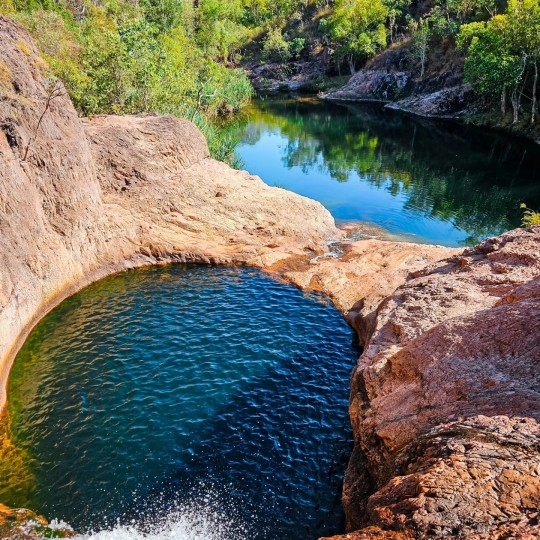
Litchfield National Park is a playground for outdoor enthusiasts, offering a range of activities that allow visitors to fully immerse themselves in its natural beauty. Whether you’re an avid hiker, a wildlife watcher, or someone looking to relax in a crystal-clear swimming hole, Litchfield has something for every type of explorer. From easy walks to more challenging hikes, the park’s diverse landscapes provide endless opportunities for adventure.
1. Hiking Trails: Exploring Litchfield on Foot
Litchfield is home to a variety of hiking trails, each offering a different way to experience the park’s natural wonders. Whether you’re seeking short, leisurely strolls or more challenging treks, the park’s trails offer something for all levels of fitness and adventure.
Florence Falls Walk: One of the most popular and accessible trails in the park, this short (1.1 km) return walk takes you through the monsoon rainforest to a lookout with breathtaking views of Florence Falls. For a more adventurous option, continue down the stairs to the base of the falls, where you can swim in the clear pool at the bottom. This trail is perfect for families or those looking for a leisurely stroll through lush rainforest.
Wangi Falls Walk: A 1.6 km loop trail that winds through the tropical forest, the Wangi Falls Walk offers a scenic route to the falls, passing through beautiful vegetation and providing an excellent opportunity to spot wildlife along the way. The path leads to a viewing platform where you can marvel at the falls and the surrounding landscapes. It's also a great way to access the swimming hole below the falls.
Tabletop Track: For those seeking a more challenging hike, the Tabletop Track offers a 39 km circuit that takes you across the park’s rugged terrain, including stunning sandstone escarpments, panoramic views, and the Lost City rock formations. This multi-day hike offers an immersive experience, ideal for seasoned trekkers who want to explore the park’s diverse ecosystems and geological features. Camping options are available along the trail, giving you the chance to fully embrace the wilderness of Litchfield.
Buley Rockhole to Florence Falls Walk: This 3.5 km walk links the Buley Rockhole with Florence Falls, offering hikers an excellent chance to see some of Litchfield’s most iconic spots while exploring the area’s diverse habitats. The trail is well-maintained and relatively easy, making it a perfect half-day hike for those who want to experience both the beauty of rockholes and waterfalls.
2. Swimming Holes: Cool Off in Nature’s Pools
Litchfield is famous for its natural swimming holes, which provide the perfect way to cool off after a hike or simply to relax and enjoy the surroundings. The park’s crystal-clear waters are an invitation to dive in and experience the refreshing beauty of the Top End’s natural pools.
Wangi Falls: The large swimming pool at the base of Wangi Falls is one of the most popular spots in the park. Surrounded by lush rainforest, the pool is safe for swimming year-round (though be sure to check for any seasonal safety warnings related to crocodiles). The clear, cool water provides a perfect way to cool off after a hike or a long day of exploration.
Florence Falls: The stunning rockholes at the base of Florence Falls offer a serene swimming experience surrounded by nature. The water is refreshingly cool, and the setting—surrounded by rainforest and rock formations—adds to the sense of tranquility. Though this is a popular spot, the relatively large pool allows for a relaxing swim, and visitors can enjoy the sound of the cascading water as they float in the peaceful environment.
Buley Rockhole: Located near Florence Falls, Buley Rockhole is a series of smaller pools formed by the cascading waters of a creek. The water is crystal clear, and the varying depths of the pools make it a great spot for both leisurely dips and a bit of fun rock-hopping. This spot is perfect for families or anyone looking to enjoy a less crowded, more intimate swimming experience.
Tjaynera Falls: For a more secluded swimming experience, Tjaynera Falls (also known as Sandy Creek Falls) is a hidden gem in the park. Accessible by 4WD, this remote spot offers a refreshing swim in a peaceful setting. The falls create a lovely rockpool that is ideal for relaxing, and the surrounding rainforest provides plenty of shade and a sense of tranquility.
3. Wildlife Watching: A Natural Habitat for Nature Lovers
Litchfield is a great destination for wildlife enthusiasts, offering countless opportunities to spot native animals in their natural habitats. The park’s diverse ecosystems provide homes for a range of species, from birds and reptiles to mammals and amphibians.
Bird Watching: With over 250 species of birds, Litchfield is a paradise for birdwatchers. Keep your eyes peeled for species such as the red-winged parrot, white-bellied sea eagle, and sandstone shrike-thrush. The park’s wetlands, like those around Wangi Falls and Tolmer Falls, are excellent birdwatching hotspots, especially during the wet season when migratory birds arrive in large numbers.
Reptiles and Mammals: Reptiles like the frilled-neck lizard, blue-tongue skink, and perentie (Australia’s second-largest lizard) are often spotted sunbathing on rocks or darting through the underbrush. For mammal lovers, the park is home to rock wallabies, northern brown bandicoots, and the occasional flying fox. These animals are most active early in the morning and late in the afternoon, so be sure to time your wildlife watching accordingly.
Freshwater Crocodiles: While they are generally shy and pose little threat to humans, freshwater crocodiles are a common sight in Litchfield’s rockholes and waterfalls. Visitors are encouraged to follow all safety guidelines and signs to ensure they stay safe while enjoying the park’s waterways.
4. Camping and Picnicking: Enjoy Nature Overnight
For those who want to fully immerse themselves in the beauty of Litchfield, the park offers several camping areas where you can spend the night under the stars. Wangi Falls and Florence Falls both have well-equipped campgrounds with facilities, allowing visitors to enjoy the serenity of the park after the day-trippers have left. The sound of waterfalls and the rustle of the wind through the trees create a peaceful backdrop for camping.
For those who prefer a day trip, picnic areas near Wangi Falls, Buley Rockhole, and Florence Falls provide great spots to relax, enjoy a meal, and take in the surrounding views. These areas are well-shaded, with picnic tables, BBQs, and designated walking tracks to further explore the nearby attractions.
Practical Tips for Visiting Litchfield National Park
Litchfield National Park is a stunning and easily accessible destination that offers a wealth of natural beauty and outdoor adventures. To make the most of your visit and ensure a safe and enjoyable experience, here are some practical tips to help you prepare for your trip to this natural wonderland.
1. Best Time to Visit: The Dry Season
The best time to visit Litchfield National Park is during the dry season (May to October), when the weather is sunny and warm, with less rainfall and cooler temperatures. During this time, the park’s trails are more accessible, the waterfalls and swimming holes are in full flow, and wildlife is more active. The wet season (November to April) can bring heavy rainfall and flooding, which may cause certain areas to be inaccessible. However, the wet season also offers a unique chance to see the park's waterfalls at their most powerful and dramatic.
2. Getting There: Easy Access from Darwin
Litchfield National Park is located about 90 km south of Darwin, making it an ideal day trip or weekend getaway. The park is easily accessible by car, with the drive taking approximately 1.5 hours from Darwin. The roads are well-maintained, but it’s important to note that during the wet season, some roads (particularly those leading to remote areas like Tjaynera Falls) may become impassable due to flooding, so it’s always a good idea to check road conditions before you travel.
For visitors without a car, there are also guided tours available from Darwin, which can be a great way to explore the park’s main attractions, such as Wangi Falls, Florence Falls, and the Magnetic Termite Mounds, with the added bonus of a knowledgeable guide.
3. What to Bring: Pack Smart for Comfort and Safety
To ensure a comfortable and enjoyable visit to Litchfield National Park, packing the right gear is essential. Here’s a list of recommended items to bring:
Sturdy Footwear: Most of Litchfield’s trails are relatively easy, but some involve uneven terrain, so it’s important to wear comfortable, sturdy hiking boots or shoes with good grip, especially for waterfall hikes and rockholes.
Swimwear and Towel: Don’t forget your swimwear and a towel if you plan to take a refreshing dip in the park’s famous swimming holes. Always check water safety guidelines regarding crocodile risks in specific areas.
Water: It’s important to stay hydrated, particularly in the warm weather. Bring plenty of water, especially if you plan to hike or explore the park’s more remote areas.
Sun Protection: The Top End sun can be intense, so pack a wide-brimmed hat, sunglasses, sunscreen (SPF 30+), and light, long-sleeve clothing to protect yourself from the sun.
Insect Repellent: Mosquitoes and other insects are common in the park, especially during the wet season. Bring a good insect repellent to avoid bites, and consider wearing long pants and sleeves when hiking in the rainforests or near waterholes.
Camera and Binoculars: Litchfield is a photographer’s paradise, with stunning waterfalls, wildlife, and landscapes around every corner. Don’t forget your camera or phone to capture the beauty of the park. Binoculars are also a great addition for birdwatching and wildlife spotting.
4. Safety Tips: Stay Safe in the Wilderness
While Litchfield is generally a safe and family-friendly destination, it’s important to take safety precautions while exploring its natural beauty. Here are some essential tips:
Swimming Safety: Always swim in designated swimming areas. Some areas, like Wangi Falls and Florence Falls, are safe for swimming, but other areas may have crocodiles or strong currents. Be sure to check local safety signs and guidelines, especially if you’re visiting during the wet season.
Crocodile Awareness: Freshwater crocodiles are found in many of Litchfield’s rockholes and waterways, but they are generally shy and pose little threat to humans. However, always be cautious near the water’s edge and follow all safety signs regarding crocodile risks. Do not swim in areas where crocodiles are known to inhabit.
Weather Conditions: The weather in Litchfield can change quickly, especially during the wet season. If you’re hiking, be prepared for sudden rain showers and know that some trails may become slippery or flooded. Always check the weather forecast before heading out and be prepared to turn back if conditions become unsafe.
Wildlife Respect: Keep a safe distance from wildlife, particularly reptiles and birds. Avoid feeding animals, as this can disrupt their natural behavior. If you encounter a rock wallaby or other mammals, observe them from a distance to avoid stressing the animals.
First Aid Kit: Carry a basic first aid kit, especially if you plan on hiking or swimming in remote areas. It’s also a good idea to have a map of the park and a fully charged phone in case of emergencies.
5. Camping and Accommodation
If you’re planning to spend more time in Litchfield National Park, there are several campgrounds within the park, including at Wangi Falls, Florence Falls, and Buley Rockhole. These campgrounds are equipped with basic amenities such as toilets, picnic tables, and barbecues. Some campgrounds also have designated powered sites for those with caravans or campervans. It’s advisable to book a campsite in advance, particularly during peak tourist season, as the campsites can fill up quickly.
For those seeking more comfort, there are a number of accommodation options just outside the park, including cabins, lodges, and hotels in nearby towns like Batchelor and Darwin.
6. Park Entry and Fees
Litchfield National Park is free to enter, which makes it an accessible and affordable destination for all types of travelers. However, some areas within the park, such as campgrounds and the Tjaynera Falls, may require a small fee or a permit. It’s always a good idea to check the Northern Territory Parks and Wildlife website or ask at the visitor center for up-to-date information about any fees or seasonal closures.
7. Respect the Environment
As with any national park, it’s important to leave no trace when exploring Litchfield. Follow the park’s rules and guidelines, stay on marked paths, and dispose of rubbish in designated bins. Respect the park’s unique flora and fauna, and avoid disturbing wildlife. Protecting this stunning natural environment ensures that future generations can continue to enjoy the beauty of Litchfield National Park.
Conclusion: A Must-Visit Natural Paradise
Litchfield National Park is an extraordinary destination that embodies the best of Northern Australia's natural beauty, offering visitors a unique blend of towering waterfalls, diverse wildlife, and untouched wilderness. Whether you're seeking adventure through hiking and swimming or simply wanting to relax amidst breathtaking landscapes, Litchfield provides a wealth of experiences that appeal to nature lovers, adventure seekers, and families alike. Its proximity to Darwin makes it an easily accessible getaway, and the park’s well-maintained trails, stunning rockholes, and tranquil environment make it a must-visit for anyone looking to connect with the wild beauty of the Top End. From the cascading waterfalls to the vibrant ecosystems and fascinating geological features, Litchfield National Park promises an unforgettable adventure in one of Australia's most picturesque and pristine wilderness areas.
Conclusion
Litchfield National Park is a captivating destination that showcases the diverse beauty of Northern Australia’s landscapes. From its awe-inspiring waterfalls to its thriving ecosystems and fascinating geological features, the park offers an abundance of natural wonders that are sure to leave a lasting impression. Whether you're exploring on foot, swimming in its pristine rockholes, or simply soaking in the tranquility of the wilderness, Litchfield offers something for every type of adventurer. Its proximity to Darwin makes it an easy and accessible escape, yet its natural beauty feels worlds away from the hustle and bustle of city life. For those seeking an authentic experience in Australia’s wild heart, Litchfield National Park is an unmissable destination—one that promises adventure, relaxation, and a deep connection with the natural world.
#kakadu tour#kakadu tours from darwin#kakadu national park tours#2 day kakadu tours from darwin#yellow water cruise kakadu#kakadu national park tours from darwin#kakadu trips#yellow river cruise kakadu#kakadu tours and travel#jim jim falls tours kakadu#litchfield np#katherine gorge#eco-friendly tours#aboriginal cultural experiences#indigenous heritage tours#outback adventure safaris#environmental conservation tours
0 notes
Text
Reunited with internet back in Darwin, I can now write about our whirlwind two day (one night) journey into Kakadu National Park. We woke at 5am, jammed our suitcases shut (speaking for myself, a suitcase half full of useless clothing I would have liked to jettison) and headed down to breakfast. Before we knew it we were once again stepping onto another AATKings bus, with about 50 suitcases stowed efficiently beneath us. On the road at 6.30am. That is touring life, especially in this part of the world where there’s a lot of kilometres between drinks. The bus driver’s commentary started at 6.31am and didn’t really stop. Egged on by those sitting closest to him, he had much to tell about Indigenous culture, early European settlers, land claims, the thwarted attempts of a French company to establish a uranium mine, the romantic adventures of erstwhile local business operators, and more. I became less annoyed by it and more attuned as I regained my equanimity after the early start.
It had been a warm morning in Darwin but mist from overnight rain had kept the temperature down a bit. By the time we touched down at the Corroboree Park Tavern near Mary River Road, and then the thoughtfully curated Warradjan Cultural Centre, the sun was high and the heat was on! I hadn’t known what to expect on this two day whirlwind tour of Kakadu. At this point in the trip, I had given up reading the itinerary and was going with the flow – or in other words, passively following the driver’s instructions to hop off the bus, follow the signs and be back in the requisite number of minutes. Such is the intrepid traveller I had become!
Our boat journey on the the Yellow Waters Billabong and South Alligator River jolted me out of my stupor. So much quiet seasonal beauty in one place. A Whistling Kite standing sentry over its nest, not too bothered by the swarming cockatoos in such close proximity (though how could you tell?), tiny brown Jacana chicks being raised by their dad, ‘walking on water’ with their disproportionally long feet. Fields of white and pink water lilies. Submerged trees providing cover for opportunistic crocodiles. Our Indigenous skipper Denis (‘with one n’) who lives on country with his wife and children using his own brand of laconic humour to point out things we may otherwise have missed and keep the rabble under control. We were told afterwards that he has taken 8,000 of these tours but you wouldn’t have picked it. The tour didn’t feel rushed – if a croc came into view Denis manoeuvred the boat to let us get the best view - but it was still over too soon. I could have spent all day on that open-sided sun-baked boat with its unforgiving plastic seats, waiting for the sun to go down on a different gorgeous world.
Next stop was a rock art gallery further into the Park, protected by a fit for purpose rock canopy. It would be hard to imagine a better place to display your art. I find it hard to take in the age and majesty of these paintings when I am in a large group and have a non-indigenous guide describing them to me. We were welcome to take photos of all but one, which had cultural significance as a harbinger of extreme danger if disturbed. Looking back at the photos I took, I can see that context is everything. Close up images only tell part of the story. The way they are displayed is something else again.
We poured out of the bus at the end of the day, exhausted, bedraggled and thirsty. We had walked very few steps – getting in and out of the bus might have been the most taxing thing we did all day and we had been well fed and watered. Nevertheless, we were done in. We waited in a long check in queue but it turned out that we were the lucky ones. Some people’s rooms weren’t ready for them and some didn’t have rooms booked for them at all, despite what their itinerary told them. Such is the effect that Covid is having on the slowly resuming tourism industry in the NT.



0 notes
Text
Best Escorted Tours of Australia: Explore the Land Down Under in Style
Australia is a vast and diverse country, offering travelers a mix of breathtaking landscapes, vibrant cities, and unique wildlife. For those looking to explore this incredible continent without the hassle of planning every detail, escorted tours provide the perfect solution. Whether you're seeking adventure in the Outback, a luxurious journey along the coast, or an immersive cultural experience, there's an escorted tour for you. Here are some of the best escorted tours of Australia to consider for your next adventure.
1. The Grand Australian Tour
For travelers who want to experience the best of Australia in one trip, the Grand Australian Tour is an excellent choice. This tour typically covers iconic destinations such as Sydney, Melbourne, the Great Barrier Reef, and Uluru.
Highlights:
Visit the Sydney Opera House and climb the Sydney Harbour Bridge.
Explore the Great Ocean Road and its stunning coastline.
Snorkel in the Great Barrier Reef, one of the world's most famous natural wonders.
Experience the magic of Uluru (Ayers Rock) at sunrise and sunset.
Enjoy a scenic ride through the Blue Mountains.
This comprehensive tour usually lasts around 14 to 21 days, ensuring you get to see all the must-visit locations in comfort and style.
2. Luxury Outback Adventure
For those who want to immerse themselves in Australia’s rugged interior, a Luxury Outback Adventure provides the perfect blend of comfort and exploration.
Highlights:
Travel through Alice Springs and learn about Aboriginal culture.
Visit the stunning Kata Tjuta (Olgas) rock formations.
Experience the iconic Ghan Train, a luxury rail journey from Darwin to Adelaide.
Stay in exclusive wilderness lodges with breathtaking views.
Discover the rich wildlife in Kakadu National Park.
This tour is ideal for nature lovers and those who want to experience the true heart of Australia without compromising on luxury.
3. Coastal Wonders of Australia
If you’re drawn to Australia’s stunning coastline, the Coastal Wonders Tour is a fantastic option. This journey explores the country’s most beautiful beaches and seaside towns.

Highlights:
Enjoy a scenic drive along the Great Ocean Road.
Visit Kangaroo Island, home to incredible wildlife.
Explore the Whitsunday Islands and Whitehaven Beach.
Discover the charming seaside city of Fremantle near Perth.
Take a cruise around Sydney Harbour.
This tour is perfect for beach lovers and those who enjoy picturesque coastal scenery.
4. Tasmania Explorer
Tasmania is often overlooked but is a paradise for nature lovers and history enthusiasts. The Tasmania Explorer Tour showcases the island’s stunning landscapes and unique culture.
Highlights:
Visit Cradle Mountain-Lake St Clair National Park.
Explore the historic site of Port Arthur.
Discover the charming city of Hobart and its famous Salamanca Market.
Take in the stunning scenery of Freycinet National Park.
Experience the unique wildlife, including Tasmanian devils.
This escorted tour is a must for those looking for a mix of adventure, history, and breathtaking scenery.
5. Wine and Food Lover’s Tour
Australia is home to world-renowned wine regions and a vibrant food scene. The Wine and Food Lover’s Tour takes you on a delicious journey through some of the country’s best culinary destinations.
Highlights:
Wine tasting in Barossa Valley and Hunter Valley.
Gourmet experiences in Adelaide and Melbourne.
Explore the Margaret River wine region.
Visit local farmers' markets and taste fresh seafood in Tasmania.
Enjoy fine dining experiences at Australia’s top restaurants.
This is the perfect escorted tour for foodies and wine enthusiasts looking to indulge in Australia’s best flavors.
6. Wildlife Safari in Australia
Australia is home to some of the most unique wildlife in the world. The Wildlife Safari Tour takes you up close and personal with the country’s incredible animals.
Highlights:
Visit Kangaroo Island, known as Australia’s “zoo without fences.”
Explore the rainforests of Daintree National Park.
See wild koalas and kangaroos in Victoria’s You Yangs region.
Take a cruise to see saltwater crocodiles in Kakadu National Park.
Snorkel with whale sharks in Ningaloo Reef.
This tour is a dream for animal lovers and nature enthusiasts looking to experience Australia’s diverse wildlife up close.
7. Best of the Great Barrier Reef Tour
For those fascinated by marine life and the wonders of the ocean, an escorted Great Barrier Reef Tour is a must.
Highlights:
Snorkel or dive in the Great Barrier Reef.
Visit Green Island and Fitzroy Island.
Stay at a luxury resort in Port Douglas.
Experience an Aboriginal-guided tour of Daintree Rainforest.
Enjoy a glass-bottom boat tour to see coral reefs and marine life.
This escorted tour is perfect for adventure seekers and ocean lovers who want to explore one of the world’s greatest natural wonders.
Final Thoughts
Choosing the best escorted tours of Australia depends on your interests and travel style. Whether you’re drawn to Australia’s vibrant cities, rugged Outback, stunning coastline, or unique wildlife, there’s a tour that caters to your preferences. These escorted tours take care of all the details, allowing you to sit back, relax, and enjoy the wonders of Australia without the stress of planning.
0 notes
Text
Things to do in Australia this Spring

If you're from the Northern Hemisphere and intend on going to Australia during our springtime time, after that the season officially runs from the September 1st via November 30th. It's a good time to check out the nation, as everything is coming to life in preparation for the summer season, so there is a great deal occurring Australia-wide.
Let's check out a few leading points to see and do during the spring.
The Northern Territory Comes Active in Spring
Aside from Darwin day tours and a few other areas, a lot of the Northern Region is a wild region. Its residence to the world-famous Kakadu National forest. The northern damp period kicks in throughout November, but the spring months of September and October are prime times to see this spectacular area.
It'll be relatively warm and damp up north, however there's no running away that, as Darwin and the whole north territory is an exotic region of the nation. Explore the wild on guided trips. Take in the special flora and wildlife, be astonished by stunning canyons. Swim in a warm spring or cool down under a magnificent waterfall.
Drive the Australian Wildflower Path
Certain areas of Western Australia come to life as the blossoms of springtime bloom. The WA Wildflower Trail is so excellent that scenic tour firms run normal drives via the countryside currently of year.
Experience the large red desert together with a rug of vivid flowers in practically every tone imaginable. See Perth's popular King's Park, or take a drive along the Coral reefs Shore to see nature at its most magnificent.
Experience the Exhilaration of the Melbourne Cup
The Melbourne Cup is Australia's a lot of famous thoroughbred horse race of the year, in addition to being one of the country's biggest showing off occasions. The fantastic race has been running because the 1850s, so it's an enduring custom with a great deal of history.
If you occur to be in Melbourne throughout the initial week of November, expect to be extensively captivated, as the city plays host to a week-long celebration to celebrate the annual operating of the Melbourne Cup.
It may sound like an extremely broad and basic suggestion, yet as the majority of Australia's populace lives near the coast, no matter where you're staying, there's bound to be a gorgeous coastline nearby.
Australia has a few of the most effective white sand coastlines on the planet, and spring is the perfect period to take a cool dip without the sunlight being oppressively hot. In lots of places there is even more to do at the beach than just swim or relax around on the sand. Some areas have beach volleyball, surfboard and body board hire, paragliding, Jet Ski work with and tons even more enjoyable points to keep you occupied.
Takeaway
There truly is no better time of the year to discover Australia than in springtime, so if you're preparing a trip down under, after that book in between September to November.
0 notes